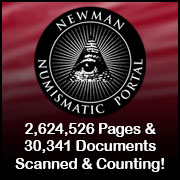
About UsThe Numismatic Bibliomania Society is a non-profit association devoted to the study and enjoyment of numismatic literature. For more information please see our web site at coinbooks.org SubscriptionsThose wishing to become new E-Sylum subscribers (or wishing to Unsubscribe) can go to the following web page link MembershipThere is a membership application available on the web site Membership Application To join, print the application and return it with your check to the address printed on the application. Print/Digital membership is $40 to addresses in the U.S., and $60 elsewhere. A digital-only membership is available for $25. For those without web access, write to: Charles Heck, Treasurer AsylumFor Asylum mailing address changes and other membership questions, contact Chuck at this email address: treasurer@coinbooks.org SubmissionsTo submit items for publication in The E-Sylum, write to the Editor at this address: whomren@gmail.com
BUY THE BOOK BEFORE THE COINSale Calendar
|
- WAYNE'S WORDS: THE E-SYLUM AUGUST 30, 2020
- NBS 2020 GENERAL MEETING REPORT
- NBS BENEFIT AUCTION REMINDER
- NEW BOOK: WHITMAN ENCYCLOPEDIA OF COLONIAL COINS, 2ND ED.
- NEW BOOK: NUMISMATICS IN BRITAIN
- NEW BOOK: METALLURGY IN NUMISMATICS
- NEW BOOK: CAST CHINESE AMULETS
- NEW BOOK: THE BOOK OF SWINDLES
- PERIODICAL: COIN COLLECTOR ISSUE 8
- LIBRARY DONATION HELPS RESEARCHERS AND YNS
- FIRST NEWMAN PORTAL SYMPOSIUM CONCLUDES
- MORE ON THE NUTILT COIN IMAGING FORMAT
- NOTES FROM E-SYLUM READERS: AUGUST 30, 2020
- MORE NEW YORK INTERNATIONAL PROGRAMS
- ORMSBY'S 1852 BANK NOTE ENGRAVING BOOK
- VOCABULARY TERM: MOLDED BORDER
- CHARLES TRISSLER STEIGERWALT (1858-1912)
- HARVEY STACK'S NUMISMATIC FAMILY, PART 77
- COIN DESIGNER IAN RANK-BROADLEY'S DIANA STATUE
- SCULPTURES BY U.S. COIN DESIGNERS
- THE HISTORY OF THE GOLD STANDARD
- DAUER COLLECTION OF CIVIL WAR ENCASED POSTAGE
- THE FIRST LADIES OF ROME
- NEW GOLD COIN HOARD FIND IN ISRAEL
- 1575 SCOTTISH JAMES VI GOLD 20 POUNDS OFFERED
- THE J.T. JONES COUNTERSTAMPS
- HERITAGE U.S. ERROR COIN OFFERINGS
- SMITHSONIAN CARNEGIE BOOK THEFT ARTICLE
- LOOSE CHANGE: AUGUST 30, 2020
Click here to access the complete archive
Click here to unsubscribe (scroll down)
To comment or submit articles, reply to whomren@gmail.com
Content presented in The E-Sylum is not necessarily researched or independently fact-checked, and views expressed do not necessarily represent those of the Numismatic Bibliomania Society.
WAYNE'S WORDS: THE E-SYLUM AUGUST 30, 2020
 New subscribers this week include:
Ali Ozan Kütükcü,
Ted Ryan, and
Stan.
Welcome aboard! We now have 6,552 subscribers.
New subscribers this week include:
Ali Ozan Kütükcü,
Ted Ryan, and
Stan.
Welcome aboard! We now have 6,552 subscribers.
Thank you for reading The E-Sylum. If you enjoy it, please send me the email addresses of friends you think may enjoy it as well and I'll send them a subscription. Contact me at whomren@gmail.com anytime regarding your subscription, or questions, comments or suggestions about our content.
Happy Birthday to us! The first issue of what would become The E-Sylum was emailed on September 4, 1998. All back issues are archived and searchable on our website as well as the Newman Numismatic Portal. Many thanks to our webmaster Bruce Perdue for keeping the archive up-to-date and to John Nebel for his longtime generosity in hosting the web site at no cost to the club. This wonderful resource would not be possible without their help.
To visit the E-Sylum archive, see:
https://www.coinbooks.org/club_nbs_esylum.html
For the complete table of contents of all 28,000+ E-Sylum articles, see:
https://www.coinbooks.org/esylum_toc.html
This week we open with updates from the Numismatic Bibliomania Society, five new books, a periodical issue, a numismatic library donation and a report on the Newman Numismatic Portal Symposium.
Other topics this week include U.S. colonial coins, Chinese amulets, the NuTilt coin imaging technology, notes from readers, Ormsby's Bank Note Engraving book, dealer Charles Steigerwalt, sculptures by coin designers, the Gold Standard, the First Ladies of Rome, and error coins.
To learn more about numismatics in Britain, metallurgy in numismatics, the Ship of Gold, Tiffany's gold coin melts, the Newlin-Friedberg Brasher doubloon, molded borders, the only three-dimensional work of Victor David Brenner, encased postage stamps, the J.T. Jones counterstamp, and the book of swindles, read on. Have a great week, everyone!
Wayne Homren
Editor, The E-Sylum
NBS 2020 GENERAL MEETING REPORT
Numismatic Bibliomania Society President Tom Harrison shared these thoughts on our recently-concluded 2020 General Meeting. -Editor
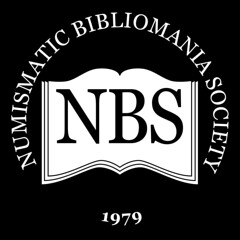 With the cancellation of this summer's ANA Convention due to Covid-19 the NBS conducted the annual meeting on August 28th via zoom. Thanks to the Eric P. Newman Numismatic Education Society (EPNNES) and NBS Vice-President Len Augsburger the entire membership had an opportunity to attend the meeting. Highlights of the meeting included the announcement of The Asylum awards, an informative presentation by Lianna Spurrier discussing how to bring a book from finished manuscript to print and Treasurer Chuck Heck's financial and membership report.
With the cancellation of this summer's ANA Convention due to Covid-19 the NBS conducted the annual meeting on August 28th via zoom. Thanks to the Eric P. Newman Numismatic Education Society (EPNNES) and NBS Vice-President Len Augsburger the entire membership had an opportunity to attend the meeting. Highlights of the meeting included the announcement of The Asylum awards, an informative presentation by Lianna Spurrier discussing how to bring a book from finished manuscript to print and Treasurer Chuck Heck's financial and membership report.
I want to thank David and Maria Fanning for conducting our benefit mail bid auction, which is critical to the financial health of the NBS. Together our generous donors and enthusiastic bidders will make the auction a success again this year. The sale closes August 31st at 6:00 PM ET. Be sure to check out the catalog and send your bids to David at df@numislit.com .
See the next article in this issue for more on the benefit auction. On a separate note, Tom issued this call for NBS volunteers for the 2021 NYINC show. -Editor
 Kevin Foley, the bourse chair of the New York International Coin Convention, has offered the NBS a club table at their planned January 2021 convention. This would be a great opportunity for the NBS to connect with a different group of collectors than we typically reach. If you plan to attend the show and would be willing to display membership applications and a few samples of The Asylum at the table please contact Tom Harrison at
tharrison1971@gmail.com
.
We also have the opportunity to hold a meeting and educational presentation at the show, and welcome potential speakers.
Kevin Foley, the bourse chair of the New York International Coin Convention, has offered the NBS a club table at their planned January 2021 convention. This would be a great opportunity for the NBS to connect with a different group of collectors than we typically reach. If you plan to attend the show and would be willing to display membership applications and a few samples of The Asylum at the table please contact Tom Harrison at
tharrison1971@gmail.com
.
We also have the opportunity to hold a meeting and educational presentation at the show, and welcome potential speakers.
For more information on NBS, or to join, see:
https://www.coinbooks.org/
For more information on the New York International show, see:
www.nyinc.info
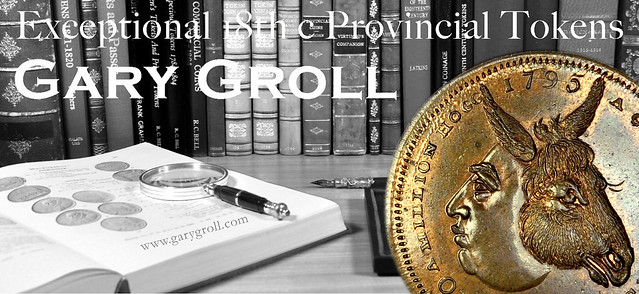
NBS BENEFIT AUCTION REMINDER
REMINDER! The 2020 Numismatic Bibliomania Society Benefit Auction is open for bidding. The sale closes on Monday, August 31, 2020. -Editor
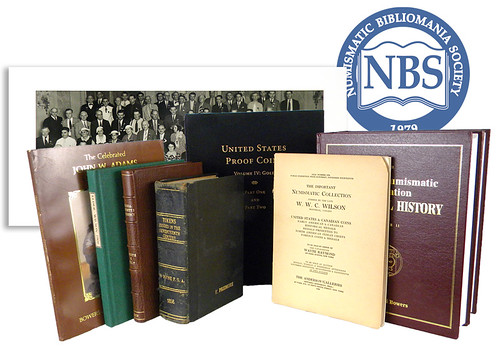
Bid on great numismatic literature and donate to the NBS at the same time! This year's NBS Fundraising Auction is entirely by mail bid this year. Download the catalogue and send your bids to df@numislit.com by 6:00PM on Monday, August 31, 2020 and help support numismatic literature.
To View the NBS 2020 Benefit Auction Catalogue
https://www.numislit.com/pdfs/NBSAuction2020.pdf
NEW BOOK: WHITMAN ENCYCLOPEDIA OF COLONIAL COINS, 2ND ED.
Whitman has published a new updated edition of Dave Bowers' Whitman Encyclopedia of Colonial and Early American Coins. -Editor
Debuts in a New Second Edition
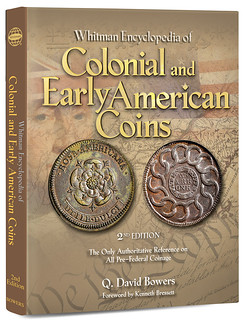 Whitman Publishing announces the release of the Whitman
Encyclopedia of Colonial and Early American Coins, second edition, by Q. David
Bowers. The 352-page hardcover book will debut in September 2020, available from
booksellers and hobby shops nationwide, and online (including at www.Whitman.com),
for $49.95.
Whitman Publishing announces the release of the Whitman
Encyclopedia of Colonial and Early American Coins, second edition, by Q. David
Bowers. The 352-page hardcover book will debut in September 2020, available from
booksellers and hobby shops nationwide, and online (including at www.Whitman.com),
for $49.95.
The Whitman Encyclopedia is the definitive reference on the coins, tokens, and related issues of colonial America and the early years of the fledgling United States. Before the first edition was published in 2009, collectors and dealers had no single, authoritative guide to these fascinating relics of everyday American life dating from the mid-1600s to the early 1800s.
In the fully revised and updated second edition, Bowers and his panel of dozens of specialists add coins newly discovered over the past ten years. They bring fresh historical research to the text, updating hundreds of catalog entries with new information, rarity figures, retail market pricing and auction records, and new photographs.
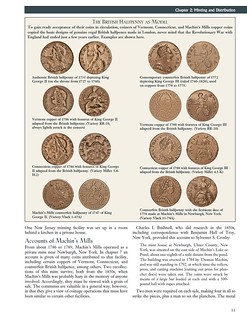
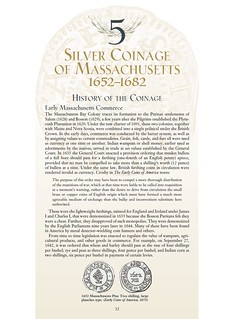
The Whitman Encyclopedia of Colonial and Early American Coins covers:
- how to collect, grade, and identify colonial coins and tokens
- how money was made and spent in early America
- minting and distribution
- silver coins of Massachusetts
- early British coins and tokens struck for America
- French New World issues
- American coins and tokens from 1783 to 1788
- other early American pieces
- later European coins and tokens minted for America
- George Washington coins, tokens, and medals
- foreign coins traditionally collected along with colonials
- nineteenth-century copies and fantasies
Bowers, widely known as the “Dean of American Numismatics” and the most published author in the field, has written an engaging text supported by nearly 2,000 full-color photographs, extensive auction data, market values and commentary, historical price trends, rarities, a selected bibliography, and an index with more than 700 entries. The first edition earned the praise of the hobby community, including the Numismatic Literary Guild's award for “Best Specialized Book, United States Coins.”
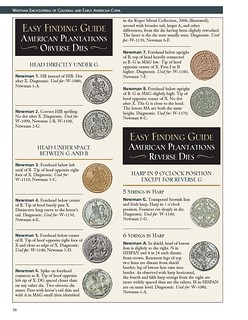
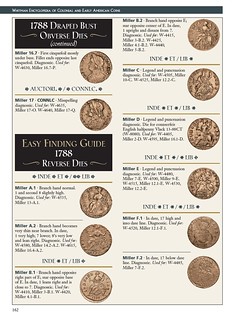
Kenneth Bressett, editor emeritus of the Guide Book of United States Coins, said, “Each coin type has been carefully documented, as are all of the notable variations. The story of money in early America—of the winning of financial freedom for our emerging nation— is reflected and amplified in each of the coins described.” The first edition won recognition from experts in the state coinages of New York, Virginia, Massachusetts, New Jersey, and Connecticut, Fugio coppers, coinage of the Republic of Vermont, Nova Constellatio coins, and other specialties. Numismatic researcher George J. Fuld predicted that it would replace Sylvester S. Crosby's seminal Early Coins of America. Louis E. Jordan III, Head of Special Collections and the Medieval Institute Library at the University of Notre Dame, called the book “very easy to read, while presenting a great deal of useful information.” Jordan in particular noted the finding guides included for the major coin series. Numismatist Eric P. Newman praised Bowers's “encyclopedic knowledge and devotion to American colonial and Confederation coinage.” Historian Joel J. Orosz said the Whitman Encyclopedia “covers expert information with authority, yet is written with such marvelous clarity that even novice collectors will find it indispensable.”
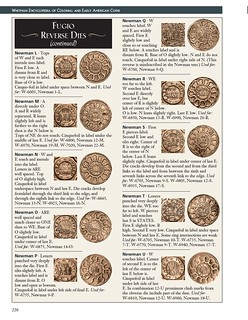
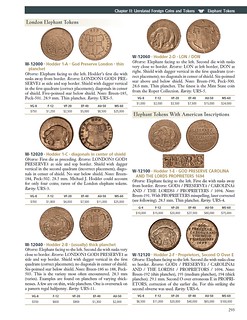
Whitman Encyclopedia of Colonial and Early American Coins, second edition.
By Q. David Bowers; foreword by Kenneth Bressett; valuations editor Jeff Garrett; research editor Julia H. Casey.
ISBN 0794847277.
Hardcover, 8.5 x 11 inches.
352 pages.
Full color.
Retail $49.95 U.S.
For more information, or to order, see:
Whitman Encyclopedia of Colonial and Early American Coins, 2nd Edition
(https://whitman.com/whitman-encyclopedia-of-colonial-and-early-american-coins-2nd-edition/)
To read the earlier E-Sylum articles, see:
NEW BOOK: THE WHITMAN ENCYCLOPEDIA OF COLONIAL AND EARLY AMERICAN COINS
(https://www.coinbooks.org/esylum_v12n08a05.html)
BOOK REVIEW: WHITMAN ENCYCLOPEDIA OF COLONIAL AND EARLY AMERICAN COIN
(https://www.coinbooks.org/esylum_v12n28a05.html)

NEW BOOK: NUMISMATICS IN BRITAIN
Here's a new publication from the Royal Numismatic Society, available through SPINK. -Editor
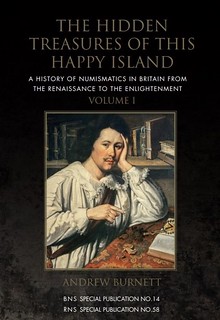 Andrew Burnett, ‘The Hidden Treasures of this Happy Island.' A History of Numismatics in Britain from the Renaissance to the Enlightenment.
Andrew Burnett, ‘The Hidden Treasures of this Happy Island.' A History of Numismatics in Britain from the Renaissance to the Enlightenment.
3 volumes:
volume I: pp. xxxvi + 566, 200 illus.;
volume II: pp. xvi + 612, 140 illus.;
volume III: pp. xiv + 626, 40 illus.
ISBN 0–901405–36–1
Royal Numismatic Society Special Publication no. 58;
British Numismatic Society Special Publication no. 14.
Distributed by Spink & Son Ltd.,
69 Southampton Row, Bloomsbury, London, WC1B 4ET
The book provides, for the first time, a comprehensive account of the collecting and study of coins in Britain from 1500 to 1750. Many new discoveries, such as the existence of a Tudor royal collection, have been made in the course of the research. In addition, important scholars and collectors have been identified, who are otherwise virtually unknown, such as James Cole, John Harrison, Simonds D'Ewes, John Marsham and Francis Sambrooke. The development of the early university collections, at Cambridge and Oxford is also described. Many unpublished documents have been identified, transcribed and, when in Latin, translated. Most are from the British and Bodleian Libraries, but many other manuscript sources have also been used, in the UK and abroad. The book is divided into 37 chapters, which are broadly chronological, with several thematic treatments interspersed. 73 appendices cover specific topics. Finally, there is a substantial ‘Register', a catalogue raisonée of all the people who are known to have had an interest.
Andrew Burnett was Deputy Director of the British Museum from 2002 to 2013, having spent his previous career in the Department of Coins and Medals. He was appointed a CBE by the Queen in the New Year's Honours of 2012, and he is a Fellow of the British Academy and of the Society of Antiquaries of London. He is past President of the Royal Numismatic Society, the Roman Society and the International Numismatic Commission. He has been awarded the Silver Medal of the Royal Numismatic Society, the Jeton de Vermeil of the French Numismatic Society and the Huntington Medal of the American Numismatic Society.
Available as a 3-volume set: £150. To order: visit
The Hidden Treasures of this Happy Island - A History of Numismatics in Britain from the Renaissance to the Enlightenment (RNS Special Publication 58, BNS Special Publication 14) by Andrew Burnett
(http://www.spinkbooks.com/index.php?route=product/product&path=59/&product_id=753)
NEW BOOK: METALLURGY IN NUMISMATICS
Another new publication from the Royal Numismatic Society covers the topic of metallurgy in numismatics. -Editor
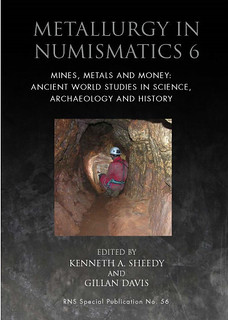 Kenneth A. Sheedy and Gillan Davis (editors), Metallurgy in Numismatics 6. Mines, Metals, and Money: Ancient World Studies in Science, Archaeology and History.
Kenneth A. Sheedy and Gillan Davis (editors), Metallurgy in Numismatics 6. Mines, Metals, and Money: Ancient World Studies in Science, Archaeology and History.
pp. xii + 326, 396 illus., including one folding map in colour. 0–901405–37–X
Royal Numismatic Society Special Publication no. 56.
Distributed by Spink & Son Ltd.,
69 Southampton Row, Bloomsbury, London, WC1B 4ET
Metallurgy in Numismatics 6. Mines, Metals, and Money: Ancient World Studies in Science, Archaeology and History contains 23 studies on geology and mining in ancient Greece, the manufacture and metallurgy of ancient Greek coins and the analysis and conservation of these coins. In the tradition of the Metallurgy in Numismatics series, the chapters collectively place numismatics within an interdisciplinary context. The volume uses the framework of behavioural archaeology to explore the life history and technology of coin manufacture and subsequent use, both ancient and modern. It covers topics ranging from the geological forces which created ores to mining, manufacture, loss and excavation through a broad range of scientific and numismatic techniques used to analyse and conserve coins.
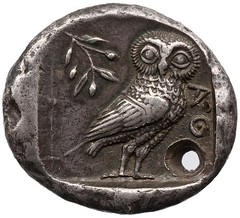 A key strength is the inclusion of contributions from leading international scholars translated into English. These provide access to French, German and Greek scholarship to an English-speaking audience, all with extensive bibliographies. The book will be of interest to historians, archaeologists, numismatists and others wanting a good understanding of the role and state of numismatics presented in an holistic and easily comprehensible format.
A key strength is the inclusion of contributions from leading international scholars translated into English. These provide access to French, German and Greek scholarship to an English-speaking audience, all with extensive bibliographies. The book will be of interest to historians, archaeologists, numismatists and others wanting a good understanding of the role and state of numismatics presented in an holistic and easily comprehensible format.
Kenneth Sheedy is the founding director (2000-) of the Australian Centre for Ancient Numismatic Studies at Macquarie University, Sydney and a member of the teaching staff of this university's Department of History and Archaeology where is an associate professor. He is the author of The Archaic and Early Classical Coinages of the Cyclades, Royal Numismatic Society SP 40 (London 2006). He was elected a Fellow of the Australian Academy of the Humanities in 2010.
Gillan Davis is the Director of the Program for Ancient Mediterranean Studies at Macquarie University where he teaches ancient Greek history within the Department of History and Archaeology and runs the Ancient Israel Program including organising its annual excavations. He is the Managing Editor of the Journal of the Numismatic Association of Australia. His main research interests are the political and economic history of Archaic Athens, numismatics and archaeometallurgy as well as ancient communications, in all of which he has published extensively.
Price: £50 (Fellows of the Royal Numismatic Society: £33). To order: visit
Metallurgy in Numismatics 6 - Mines, Metals, and Money: Ancient World Studies in Science, Archaeology and History (RNS Special Publication 56) by Kenneth A Sheedy and Gillian Davis (editors)
(http://www.spinkbooks.com/index.php?route=product/product&path=59/&product_id=752)
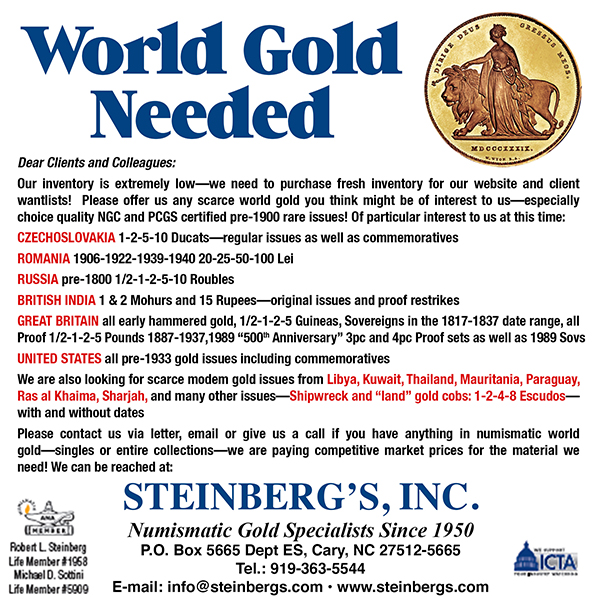
NEW BOOK: CAST CHINESE AMULETS
David Hartill has published a hefty new book on cast Chinese amulets. Here's the announcement. -Editor
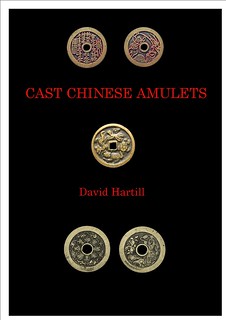 Cast Chinese Amulets
Cast Chinese Amulets
By David Hartill
New Generation Publishing
788 pp Hardcover
Available from Amazon
For over 2,000 years, the Chinese have been producing amulets in the shape of flat metal objects, usually cast in brass or bronze, some shaped like the traditional square-holed cash coins, others in a variety of fancy shapes, promising good luck in various fields, the turning away of evil influences, or conveying religious sentiments. Some have inscriptions taken from the Classics of 500 BC.
Previously, catalogues of these amulets were arranged in various different ways – by shape, size, meaning, Emperor's name, or a common feature. However, this made it difficult to locate a particular piece – it would not be immediately clear to a non-expert whether a piece was “Lucky”, “Religious”, “Family” or “Coin”.
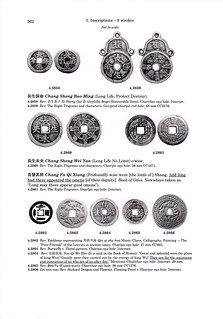 This catalogue is designed for ease of identification. It is divided into four sections – Openwork, Pictorial, Zodiac, and Inscriptions. Preceding the detailed catalogue for each section is a Finding Guide which is arranged by salient features, or by the first character of the inscription. There is also a section which lists inscriptions that might not be clear as they are in non-standard scripts or lay-outs. In the catalogue there is a brief description of the piece, the inscription (if any) in Chinese characters and Pinyin, and a translation, explanation, and source.
This catalogue is designed for ease of identification. It is divided into four sections – Openwork, Pictorial, Zodiac, and Inscriptions. Preceding the detailed catalogue for each section is a Finding Guide which is arranged by salient features, or by the first character of the inscription. There is also a section which lists inscriptions that might not be clear as they are in non-standard scripts or lay-outs. In the catalogue there is a brief description of the piece, the inscription (if any) in Chinese characters and Pinyin, and a translation, explanation, and source.
Over 5,000 amulets are included in the catalogue. Together they provide a fascinating insight into traditional Chinese beliefs and aspirations.
For more information, or to order, see:
Cast Chinese Amulets Hardcover – August 13, 2020
(https://www.amazon.com/Cast-Chinese-Amulets-David-Hartill/dp/1800316623/ref=sr_1_4)

NEW BOOK: THE BOOK OF SWINDLES
The June 2020 issue of Chopmark News edited by Colin Gullberg includes an interview with the coauthor of a recent translation of a 1617 Chinese book offering insight into the use (and counterfeiting of) silver in daily commerce in the late-Ming and early-Qing periods. With permission, here is an excerpt from the interview. -Editor
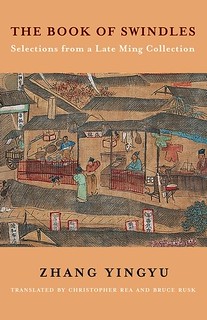 The Book of Swindles
The Book of Swindles
by Zhang Yingyu
Translated by Bruce Rusk and Christopher Rea
Columbia University Press
2017
ISBN: 9780231178631
In this issue, I interview Dr. Bruce Rusk. Dr. Rusk is Associate Professor of Asian Studies at the University of British Colombia in Vancouver, Canada. His focus is on late Ming, early Qing cultural history. I interviewed him in Taipei where he is a visiting researcher at Taiwan's Academia Sinica, Taiwan's top research center. You can read about Professor Rusk's information here.
CG - Colin Gullberg BR - Bruce Rusk
CG: Thank you so much for talking to me today.
First let me tell my readers what your area of exper- tise is. You are interested in what might be called crime literature from China in the late-Ming and early-Qing periods [1500 and 1600s]. You, along with another researcher, Christopher Rea, translated an unusual book, The Book of Swindles [杜騙新書] published 1617 by Zhang Yingyu [張應俞]. Much of the book describes crime and how to avoid being a victim of fraud, forgery and theft. Many of the stories involve silver. The book actually predates chopping in China but since it deals with silver and how silver was used in China in the 1500s and 1600s I thought Chopmark News readers would be interested in your research. How did you get interested in this area of research?
BR: I'm interested in the ways people authenticated texts and material objects in Ming and Qing China. It's a fascinating period to study as there were many important changes going on. Printing was spreading, a new class of rich people had appeared and they wanted to know how to assess the quality and genuineness of items like silver to avoid being cheated.
CG: The book is made up of a large number of very short stories describing various crimes. Are the stories in the book fictional or essentially true?
BR: All are fiction but a few are tied to real people. It's impossible to know if some version of the scams actually happened but many are quite believable.
CG: Who was the intended reader of this book? Travelling merchants?
BR: Merchants are the main readers the author addresses, so they were probably the main audience when it was first published. The stories usually explain an event, like how a merchant was cheated with fake silver ingots and tell the reader what to watch out for to avoid having the same thing happen to them.
CG: You also wrote “The handful of surviving assaying manuals must represent only a fraction, at least in terms of editions and copies, of a larger corpus. They were ephemera, not the sort of book that elite collectors, even if they happened to own one, would catalogue or preserve, and often such documents survive only because they were copied into other books. One of the earliest examples comes from The Book of Swindles (1617) by Zhang Yingyu.” where he says, “In the autumn of 1611 I came across a booklet in a book shop that explains very clearly how to distinguish between genuine and fake silver. I have copied a selection below so that gentlemen out in the world might see it and clearly identify it at first sight.” Was this an early shroff handbook and did the shroff handbooks have a hand in a new form of Chinese literature?
BR: I think you could just as well call it a ‘counterfeiter's manual,' since it talks about how to make fake silver as much as it tells you how to spot it. It was before Spanish coins had arrived in China but silver bars had started coming in from Mexico and Peru, as well as Japan, in volume.
For more information, or to order, see:
The Book of Swindles
Selections from a Late Ming Collection
(https://cup.columbia.edu/book/the-book-of-swindles/9780231178631)
The issue has a number of interesting and useful articles. Topics include chopmarks on ancient coins and paper money, and detailed looks at coins from member collections and recent auction sales. -Editor
For more information on Chopmark News, or to subscribe, contact Colin Gullberg at:
chopmarknews@gmail.com
THE BOOK BAZARRE
PERIODICAL: COIN COLLECTOR ISSUE 8
A new issue of Coin Collector magazine has been published. -Editor
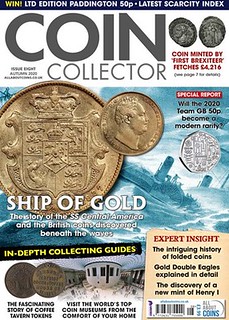 What's in this Issue?
What's in this Issue?
Inside Issue 8 of Coin Collector magazine:
Issue 8 of Coin Collector features an exclusive report on the renowned SS America shipwreck discovery, which has seen a remarkable hoard of numismatic treasures resurface and excite the collecting market. US expert Donn Pearlman tells the story of the ill-fated ship and details the many rare coins discovered many years later – including a range of scarce British pieces.
The packed issue also features a comprehensive collecting guide to the 20 Francs coin, produced by a number of European countries and now one of the most esteemed coins from the Continent. We take a look at the lost mints of Anglo-Saxon England; continue our in-depth examination of Medieval coin forgeries, and provide a special feature on caring for your coins.
Our banknote travels take us to Bhutan, as we detail the colourful paper money of the beautiful mountainous country; we take another look at collecting modern British coins with Change Checker, whilst the popular British Numismatist pages bring you more academic insight into the world of coins, together with updates on the latest discoveries, events, and exhibitions.
With the latest news, auction and online prices, new coins, medals spotlight, events, interviews, opinion and more, Coin Collector is quickly becoming your must-read guide to the wonderful world of numismatics.
To read the complete article, see:
Coin Collector Issue 8
(https://www.allaboutcoins.co.uk/store/back-issues/all-about-coins/coin-collecting-magazine-issue-8-issue-8-1/)
LIBRARY DONATION HELPS RESEARCHERS AND YNS
Reader Bruce Benoit made a kind gesture recently to help out fellow researchers and bibliophiles Richard Kelly & Nancy Oliver. Earlier articles described how they lost their home and numismatic library in a horrific wildfire. Bruce sent them a shipment of books, and has still more to donate to new collectors who can make use of them. Thanks! -Editor
In early August of 2020, I contacted Richard Kelly & Nancy Oliver of Roseville, California to offer my numismatic library. Richard and Nancy have written many fine articles for various coin related publications over many years including “The Numismatist,” the monthly publication of the American Numismatic Association (ANA). I remembered reading the sad news that their home including their numismatic library was lost in the “Camp Fire” last year in Paradise, California. I was disappointed when they ceased writing articles due to this tragic event. My library has been sitting in boxes since my last move and figured that they could use some help in re-building their library. Richard and Nancy were very grateful towards my offer and asked if I could put together an inventory of the books and send that to them. This was to not receive any duplicate titles that they already had replaced, or received from other donations since the fire. I complied and created an electronic inventory of just under 100 titles.
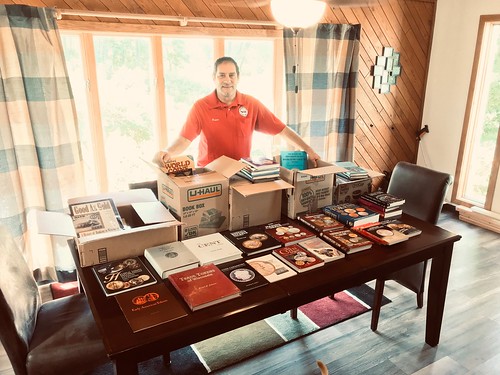
Bruce Benoit and his books
I remembered seeing an advertisement for the Numismatic Bibliomania Society (NBS) in The Numismatist publication, and also for some time have enjoyed reading their weekly electronic newsletter, The E-Sylum produced by Wayne Homren. So I contacted Wayne via e-mail to ask if the NBS would be interested in supporting this donation effort and help with the cost of shipping the books. Wayne replied that there was going to be an upcoming society board meeting and that he would make mention of it on my behalf. Later, he contacted me and told me that one of the board members has stepped up and offered to pay for the book shipment. This was great news to Richard, Nancy, and me, as I did not want to donate my library and then have to pay to ship it. The responding board members were Maria and David Fanning of Kolbe & Fanning Numismatic Booksellers of Gahanna, Ohio.
When I received the list of books that Richard and Nancy would accept from my inventory I pulled them from the many boxes and prepared them for shipment. Maria was very helpful in providing me the best way to prepare and package the books to decrease the chance for damage during shipping. Once I had the books protected and packaged, all I had to do was e-mail Maria with the box sizes and weights and she e-mailed me the shipping labels to place on the boxes. The whole process was painless due to the help of Maria.
I would like to thank both Maria and David Fanning of Kolbe & Fanning Numismatic Booksellers for their generosity in covering the shipping costs, and Wayne Homren at the NBS for his role in getting the word out. I really hope that both Richard and Nancy will enjoy the books that I have donated and that they assist them with their research to write future articles that I and many others enjoy reading.
Richard Kelly and Nancy Oliver write:
"To all,
"Yesterday afternoon (Wednesday, August 26th) we received all 18 numismatic related books donated to us from Bruce Benoit of Waupaca, Wisconsin. They were well packaged and all arrived in good order. The books are a very welcome addition to our research library, and each and every one will be placed in prominent places within our renewed assemblage. Several holes that have existed in our collection have now been filled.
"We thank Bruce and Kathy Benoit, Maria and David Fanning, and Wayne Homren for their generosity, time and efforts in this endeavor. Best to all and may all be safe,
"Richard Kelly and Nancy Oliver"
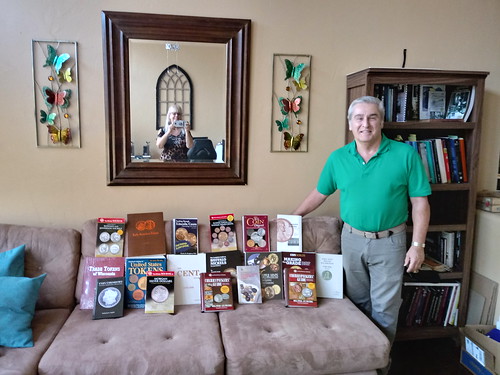
Richard Kelly and Nancy Oliver (look closely!) with their new books
Bruce adds:
"Problem solved, right? Not quite, I still have over 75 titles of books that I would like to find loving homes for. I have books in the categories of: U.S. Coins, U.S. Paper Money, World Paper Money, Canadian Coins, Canadian Paper Money, and Tokens, both U.S. and Canada. Ideally I would like to donate the remaining books to the youth of our hobby, the future of numismatics. I will also consider any local coin clubs that are in need of starting, or expanding their libraries. All I ask is that the parties receiving the donations make arrangements for the shipping.
"My contact information is:
Bruce Benoit
benwab@sbcglobal.net
"
Thanks for your generous offer! I'm glad many of the books have found a good home with Nancy & Rich, and hope the remaining books find good homes as well. Happy reading, everyone. -Editor
To read the earlier E-Sylum articles, see:
FIRE AFFECTS AUTHORS RICH KELLY AND NANCY OLIVER
(https://www.coinbooks.org/v21/esylum_v21n48a07.html)
THANKS FROM RICH KELLY AND NANCY OLIVER
(https://www.coinbooks.org/v22/esylum_v22n25a08.html)

FIRST NEWMAN PORTAL SYMPOSIUM CONCLUDES
The first Newman Numismatic Portal Symposium is now history. Project Coordinator Len Augsburger provided the following report. -Editor
First Newman Portal Symposium Concludes
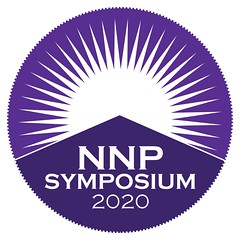 The Newman Numismatic Portal Symposium presented a virtual cornucopia of numismatic content over a three-day period, August 28-30. Capably managed by Lianna Spurrier of Numismatic Marketing, this Zoom-based, online event featured over forty presentations on a wide array of numismatic topics, from ancient to moderns. Audience engagement was strong and nearly all sessions included spirited question & answer segments. Many thanks to the NNP Symposium presenters, who did considerable preparation on slide decks and related content. All presentations were recorded and will be made available on the Newman Portal shortly. We welcome suggestions for future Symposium offerings, which may be sent to
NNPCurator@wustl.edu
.
The Newman Numismatic Portal Symposium presented a virtual cornucopia of numismatic content over a three-day period, August 28-30. Capably managed by Lianna Spurrier of Numismatic Marketing, this Zoom-based, online event featured over forty presentations on a wide array of numismatic topics, from ancient to moderns. Audience engagement was strong and nearly all sessions included spirited question & answer segments. Many thanks to the NNP Symposium presenters, who did considerable preparation on slide decks and related content. All presentations were recorded and will be made available on the Newman Portal shortly. We welcome suggestions for future Symposium offerings, which may be sent to
NNPCurator@wustl.edu
.
It was an excellent, well-run event. Congratulations to all involved - it wasn't easy to pull this off. I gave one talk myself earlier today and tuned in for many more. These last three days were the closest I've come to having a coin convention experience since before the coronavirus hit. Many excellent and sometimes thought-provoking presentations. We'll have to be patient, but once post-production is complete the videos will be available for viewing of the NNP site. -Editor
Link to NNP Symposium home page:
https://nnpsymposium.org/
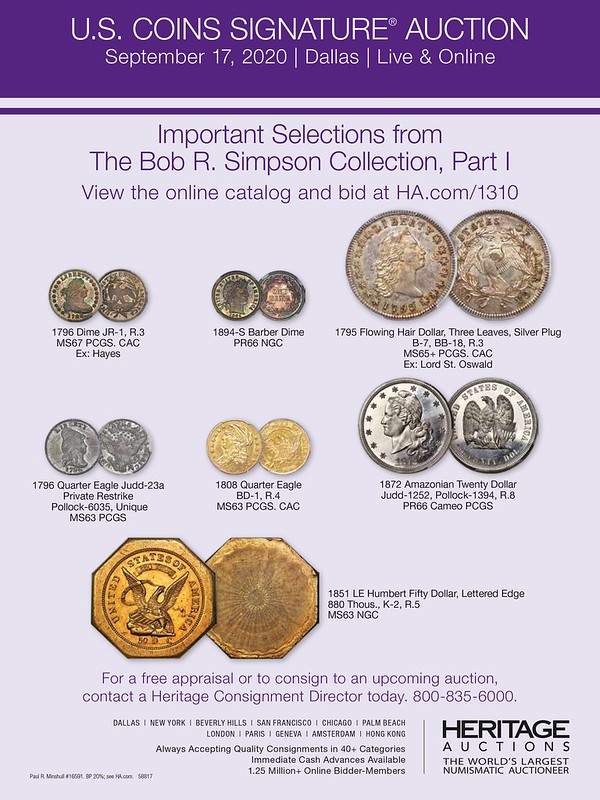
MORE ON THE NUTILT COIN IMAGING FORMAT
A couple readers had comments and questions about the NuTilt coin imaging technology discussed last week. I passed these along to John Brush at David Lawrence Rare Coins, and he responded in a new blog post. With permission, we're republishing the exchange here. Thanks! -Editor
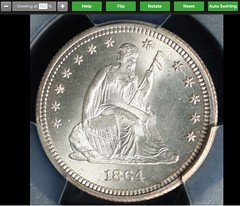 We've received quite a bit of feedback in the past week regarding our trial release of nuTilt imaging. It's truly been rather exciting for us here at DLRC. While we released it to “test” the project before a full release, it was picked up and broadcast by a number of places and it brought us a lot of feedback regarding the program. Our friends at The E-Sylum were the first to broadcast the new technology and it brought about some really great questions.
We've received quite a bit of feedback in the past week regarding our trial release of nuTilt imaging. It's truly been rather exciting for us here at DLRC. While we released it to “test” the project before a full release, it was picked up and broadcast by a number of places and it brought us a lot of feedback regarding the program. Our friends at The E-Sylum were the first to broadcast the new technology and it brought about some really great questions.
As far as feedback goes, we've talked to a number of customers this week with very positive comments as well with some constructive suggestions. We're working on all of these as quickly as we can, but we still want more feedback. So, please feel free to shoot me an email at john@davidlawrence.com with any comments you may have!
We have learned over the years that collectors prefer more viewpoints on coins and that's our motivation behind the concept. As for the questions, the best ones came from a pair of E-Sylum readers and I've tried to address those here. To aid in the format of this blog, I've distilled these long form discussions into central points and paraphrased them a bit for clarity and brevity.
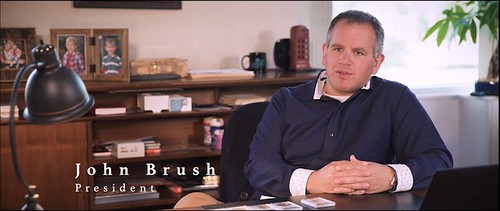
Reader 1:
"I've wanted something like this for years. It is particularly important for raw foreign coins. There was a shield nickel I noticed as a good example of what can be accomplished - there's a striation (scratch or "mark") to the right of the shield that only pops up at a certain incident light angle. Only a small percentage of angles would show it, and that's even ignoring the incentives for vendors to not pick that one.
"Part 2: Sadly, all the talk about patents suggests it is going to be slow in adoption, despite the need and ingenuity of the process. Much of the adoption rate will depend upon the cost of the imaging equipment."
Yes, this has been exactly what is missing. When you can't examine a coin closely in-hand, you only see a portion of the coin's character. nuTilt is built to show exactly all aspects of the coin. In today's world where transparency is the key, we viewed this as an opportunity for the collector to be more informed about the coin.
Unfortunately due to the costs of development that was put into this project, a patent really is necessary. This has been in the works for several years and the equipment is quite impressive (and expensive). So, it's necessary for us to do so to protect the investment. That being said, it will soon be available to all that want to take advantage of the software. Yes, there's a cost to it, but we'll be accepting submissions in early 2021.
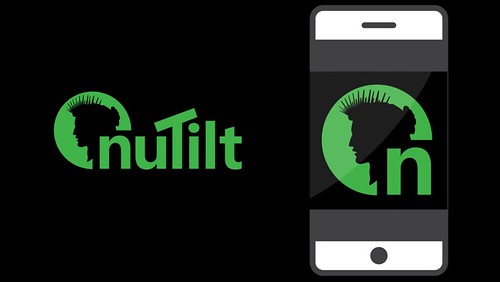
Reader #2:
"1. It seems like a big advance in imagery technology. I am not aware of any other way to achieve the effect of "tilting" a coin so as to show surfaces from a slightly different angle other than to actually tilt a coin in your hand.
"2. It would make me more comfortable in buying a coin without actually physically examining it first, since it does seem to be a big improvement over static images.
"3. I would like to know more about the technical specifications, especially about lighting, to understand how the imaging effects are created.
"4. One thing that appears to be an issue is the level of detail possible. If I wanted to focus on a small area--say, around the date, or on a few of the denticles-- could I control the program to allow the tilt to focus on that area? Could I slow down, or even freeze the tilt, while looking at that area?"
John:
1. Yes. There are some other technologies in other businesses, but they are distinctly different. When the app launches with the full launch next month, it'll be even more dramatic and you'll see why we're even more excited!
2. Yes, that's the absolute goal of this. It could prevent the need for traveling to auctions, coin shows, and other places when it's not possible. When COVID-19 became an issue, it caused us to push even harder towards finalizing the technology…
3. Unfortunately we can't discuss the specifications at this time. We're constantly tinkering with these, but it's what has taken years to develop.
4. YES! The app makes it VERY easy to do this. With the web-based version, you can right click your mouse and focus on a certain part of the coin and then zoom in from there. You can use the “auto-swirl” feature at many different speeds from there allowing you to identify varieties as well. The app allows you to tilt the coin or you can allow the image to do it at varying speeds, whichever you prefer. There's also a handy help button at the top of the screen designed to help you with the other functions that nuTilt offers.
To read the complete article, see:
Just Ask John: More nuTilt Questions
(https://blog.davidlawrence.com/just-ask-john-more-nutilt-questions/)
To read the earlier E-Sylum article, see:
COIN IMAGING FORMAT: NUTILT
(https://www.coinbooks.org/v23/esylum_v23n34a06.html)
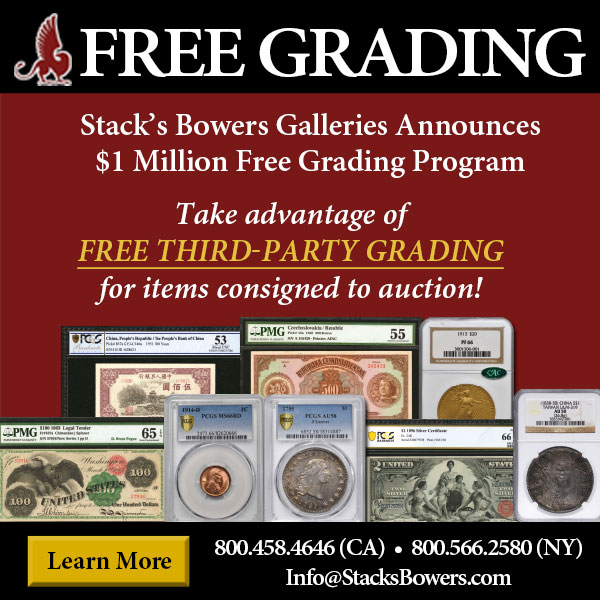
NOTES FROM E-SYLUM READERS: AUGUST 30, 2020
Whitman Folder Books Now Shipping
Author David Lange writes:
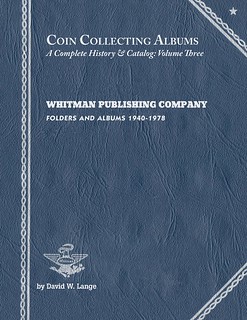 "My books finally arrived Thursday morning, and I've been packaging orders ever since. I expect to have everything in the mail by Monday morning.
"My books finally arrived Thursday morning, and I've been packaging orders ever since. I expect to have everything in the mail by Monday morning.
"The book weighs in at four pounds, and the entire shipment came in at 1500 pounds. Neighbors were treated to the sight of the delivery driver and I struggling to push the palette up my driveway. I'm attaching a photo of the end result.
"Despite all the work and the delays, I'm very pleased with the finished product."
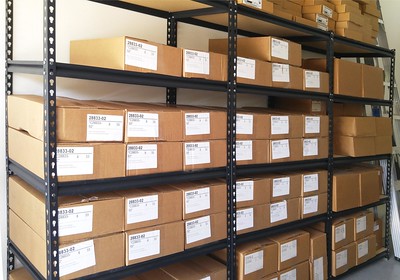
See the earlier articles for ordering information. Remember, the pre-publication price reported in the first article has expired. This looks like a wonderful book, and I'm awaiting my copy. -Editor
To read the earlier E-Sylum articles, see:
NEW BOOK: COIN COLLECTING ALBUMS, VOLUME THREE
(https://www.coinbooks.org/v23/esylum_v23n25a03.html)
WHITMAN COIN FOLDERS AS COLLECTIBLE ITEMS
(https://www.coinbooks.org/v23/esylum_v23n33a14.html)
Tiffany's Gold Coin Melts
Last week I traded emails with Dan Hamelberg over a non-numismatic topic we both enjoy: stained glass. I'd sent him an article I'd seen on "slag glass", a term I was unfamiliar with. Dan shared a numismatic connection I don't think we've discussed here before, so here are his comments on the article. -Editor
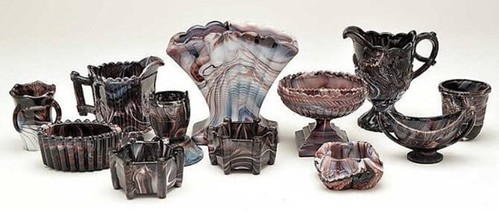
Dan writes:
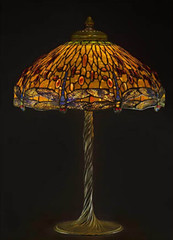 "I did enjoy the article, but I think the illustrations of Tiffany lamps and glass along with the slag glass examples is somewhat misleading. Some Tiffany glass was produced with slag glass production methods, but the different colors of Tiffany stained glass were produced by the addition of different metal oxides into the molten glass. For example, to get a red color, gold is added to the molten glass. As legend has it, Tiffany himself would add $20 gold pieces into the molten glass to produce the red color. Back then, $20 was probably a week's wages give or take, so Tiffany wanted to be sure the $20 gold pieces actually made it into the mix."
"I did enjoy the article, but I think the illustrations of Tiffany lamps and glass along with the slag glass examples is somewhat misleading. Some Tiffany glass was produced with slag glass production methods, but the different colors of Tiffany stained glass were produced by the addition of different metal oxides into the molten glass. For example, to get a red color, gold is added to the molten glass. As legend has it, Tiffany himself would add $20 gold pieces into the molten glass to produce the red color. Back then, $20 was probably a week's wages give or take, so Tiffany wanted to be sure the $20 gold pieces actually made it into the mix."
Interesting. No rarities, I hope! Thanks. -Editor
To read the complete article, see:
What is Slag Glass? Price Guide and History
(https://www.invaluable.com/blog/slag-glass/)
Don Partrick and the Brasher That Got Away
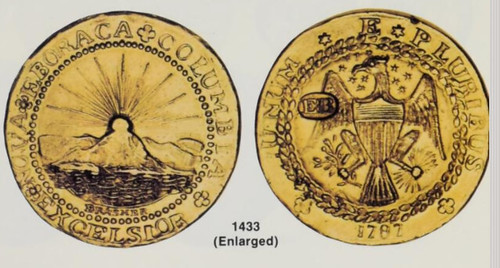
Dennis Forgue writes:
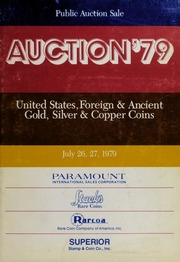 "Seeing the obit for Don Partrick and the upcoming sale of his Brashers, and Alan's reply, I thought I would tell the tale of the one that got away. Back in 1979 Rarcoa was fortunate to obtain the Newlin-Friedberg (that is the JACK Friedberg) Brasher for Auction ‘79. Yes, it was Jack that was the consignor, not Robert as has been reported elsewhere.
"Seeing the obit for Don Partrick and the upcoming sale of his Brashers, and Alan's reply, I thought I would tell the tale of the one that got away. Back in 1979 Rarcoa was fortunate to obtain the Newlin-Friedberg (that is the JACK Friedberg) Brasher for Auction ‘79. Yes, it was Jack that was the consignor, not Robert as has been reported elsewhere.
"It was a thrill to open up the package and be able to actually view the first Brasher to be sold at auction since the 1922 Ten Eyck sale. I first thought how small it was, but picking it up and seeing the thickness and the weight of it surprised me. Writing the catalogue was a thrill, but being the auctioneer during the sale was even better.
"I was at the podium with Ed Milas who was on my left working the book. The. Room was packed and there were several TV cameras present. Walter Perschke from Chicago was directly in front of me in the second or third row. He was the surprise bidder in the sale. Before the sale, Don Partrick told me that he would be bidding on the Brasher as long as his pen was in his shirt pocket. He sat at the end of the first row next to John Ford. No one could see that he was bidding, including Ed. Perschke was was also bidding with his pen held up waist high without moving. No one in the room knew who the final two bidders were. People were straining to see and Don Kagin even stood on a chair to try and see. Ed Milas very excitedly was asking me “who was bidding?” He did not know about Don's secret method, and did not see Perschke's pen. Margo Russell was taking photos behind me and she was the only other person that saw Perschke bidding.
"Don finally removed his pen from his pocket and Walter became the owner of the most expensive coin ever sold at that time. Don finally obtained his Brasher a few months later."
Great story. Thanks! I reached out to Alan Weinberg, knowing he was probably in the room at the time. -Editor
Alan writes:
"I was indeed there, two rows directly behind Perschke. This Ten Eyck Brasher, much better struck than the higher-graded Stickney-Garrett specimen that sold to Partrick in 1980 with Art Kagin his immediate underbidder. I was standing alongside of Art in the rear of that auction room. This was the very same Brasher that Dick Picker offered me out of the Brand estate in June 1962 at $14K, the month I graduated from high school. Days thereafter, Dick sold it to Jack Friedberg when I should have asked my Dad to help.
"Anyway, seconds after Walter Perschke won the “Apostrophe” RARCOA Brasher, Walter rose and stormed out of the auction room, a movement he duplicated decades later when Heritage auctioned it for less than the $6-7M Walter had anticipated.
"I also think that Partrick's secret bidding was based on a convoluted “negative“ technique of keeping his pen IN his shirt pocket to indicate he WAS still bidding. More than one advanced bidder like Ford and Bass have lost in bidding as their secret bidding signals were too convoluted.
"A few years ago I was astonished to find that Ford in 1959, three years before Picker offered me the Brasher, had written Michael Zeddies, Virgil Brand's nephew, to say that he'd heard “my friend Dick Picker was again pursuing “the Ten Eyck Brasher and offered Zeddies $10K “which is not nickels and dimes“ for it. Zeddies apparently declined and sold it thru Picker in the summer of 1962 for $4K more.
"I was amused by the tone of Ford's letter to Zeddies in classic Ford style. This letter and other Ford correspondence appeared as one lot in Stack's Ford Library part II. That letter's content is in tiny italics below the lot description."
To see the Auction '79 catalog on the Newman Numismatic Portal:
Auction '79: United States, Foreign & Ancient Gold, Silver & Copper Coins
(https://nnp.wustl.edu/library/auctionlots?AucCoId=16&AuctionId=530400)
To read the earlier E-Sylum articles, see:
DONALD G. PARTRICK (1926-2020)
(https://www.coinbooks.org/v23/esylum_v23n33a10.html)
MORE ON DONALD GROVES PARTRICK
(https://www.coinbooks.org/v23/esylum_v23n34a11.html)
Buried With Two Half Cents
Dave Hirt of Frederick, MD writes:
"My local newspaper has a column each day of things that happened on that date. In the Aug. 27 paper, 100 years ago, was an account that workmen while excavating found bones of a man buried there many years before. In the eye sockets they found two old half cents. I knew that this was an ancient practice, but I had no idea that it was still being done in the 19th century."
Who says you can't take it with you? I don't know when this practice died out, but coins were certainly placed on the eyes of the deceased well into the 19th century. See the earlier E-Sylum article linked below about coins placed on the eyes of the assassinated President Abraham Lincoln. -Editor
To read the earlier E-Sylum article, see:
THE COINS FROM LINCOLN'S EYES
(https://www.coinbooks.org/esylum_v08n47a25.html)
THE COINS PLACED ON LINCOLN'S EYES
(https://www.coinbooks.org/v20/esylum_v20n11a09.html)
Craig Alan Keplinger (1948-2020)
Christopher Baker passed along this obituary of coin dealer Craig Keplinger. Thanks. -Editor
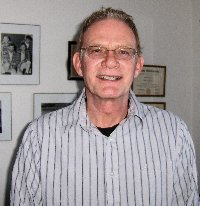 Craig Alan Keplinger, 71, of Coralville, died peacefully Wednesday, July 15, 2020 at home surrounded by his family.
Craig Alan Keplinger, 71, of Coralville, died peacefully Wednesday, July 15, 2020 at home surrounded by his family.
Craig was born October 24, 1948 in Kendallville, Indiana, the son of Carl and Carolyn (Kiefer) Keplinger. He was a graduate of Hartford City (Indiana) High School. Craig played piano in “The Greenbriers”, a well-known musical group in Hartford City. Craig received a bachelor's degree and a master's degree in science from Duke University.
Craig was a biomedical engineer at VAMC for many years. When he retired Craig owned and operated Keplinger World Coins.
To read the complete article, see:
Keplinger World Coins
(http://www.numiswiss.com/)
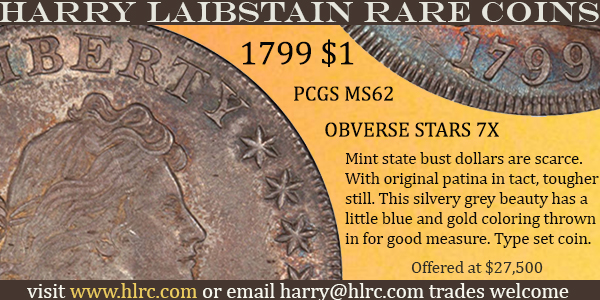
MORE NEW YORK INTERNATIONAL PROGRAMS
Additional speakers have been announced for the planned January 2021 New York International Numismatic Convention. Here's an excerpt from the press release. -Editor
 The 49th Annual New York International Numismatic Convention has announced
the addition of two educational programs to its slate of club meetings and
activities.
The 49th Annual New York International Numismatic Convention has announced
the addition of two educational programs to its slate of club meetings and
activities.
The NYINC will be held at the Grand Hyatt New York, located on 42nd Street between Park and Lexington Avenues. Convention activities will be held from Friday, January 8 through Sunday, January 17. The 100 dealer world and ancient specialty bourse will be held January 14-17.
Prue Morgan Fitts will be the featured speaker at the meeting of the Association of Dedicated Byzantine Collectors. Her topic will be: Adventures in Collecting: Memories of My Numismatic Quests. The Byzantine collectors meeting will take place at 11am on Saturday, January 16 at the Grand Hyatt.
The New York Numismatic Club will host their current Vice-President Darrell Low at a gathering scheduled for 1pm on January 16 at the Grand Hyatt. His topic will be: An Historical Survey of the New York Numismatic Club and the Contributions of Selected Members to the World of Numismatics.
The full NYINC Schedule of Events can be found at the convention's website, www.nyinc.info.
For more information on the New York International, see:
www.nyinc.info
To read the earlier E-Sylum article, see:
NEW YORK INTERNATIONAL EDUCATIONAL PROGRAMS
(https://www.coinbooks.org/v23/esylum_v23n32a13.html)

ORMSBY'S 1852 BANK NOTE ENGRAVING BOOK
At my request book dealer Gil Parsons kindly provided this excerpt from the anniversary catalog of his firm Parsons Books. It describes one of the rarest books on U.S. paper money, Waterman Lilly Ormsby's 1852 work on banknote engraving. Thank you! -Editor
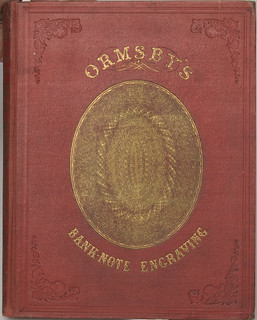 “THE MOST DESIRABLE VOLUME EVER PUBLISHED
ON AMERICAN PAPER MONEY”
“THE MOST DESIRABLE VOLUME EVER PUBLISHED
ON AMERICAN PAPER MONEY”
ORMSBY, Waterman Lilly A Description of the Present System of Bank Note Engraving showing its tendency to facilitate counterfeiting: to which is added a new method of constructing bank notes to prevent forgery
New York: W.L.Ormsby and London: Willoughby & Co, 1852
This magnificent volume, produced at huge expense, is a work of Americana of the utmost importance and of paramount rarity. Robert Wester, in his 1985 study of the work, was able to locate only five copies. Since then, no more than four copies (the number is slightly problematic as some copies seem to have been sold twice or more in the intervening years) have come to light, of which only the copy which Ormsby sought to present to President Pierce (Heritage Auctions 2004) is superior to the copy at hand.
A situation had arisen, familiar to all collectors of obsolete banknotes, whereby banknotes were assembled piecemeal from disparate design elements---often engravers did not know the ultimate fate of their borders, vignettes, and denomination markers. Thus, even legitimate elements could readily be incorporated into counterfeit notes, and the profusion of notes meant that people often lacked knowledge of what quality a genuine note ought to possess. Ormsby thus proposes and illustrates a series of innovations intended to introduce complexity and integrity into bank note production. The variety of illustrations shows his themes: the transfer press, the medal-copying machine, the ruling machine, elaborate vignettes, multiplying geometric figures by means of the engraver's lathe (an elaborate color frontispiece), medallion engraving, use of steel plates (illustrated by four bank notes), “an easy method of counterfeiting”, a portrait of Jacob Perkins (of “Perkins Plate” fame), “vignettes in common use” (2 plates) and “the new system partially illustrated” (virtuoso engraved copying of magazine plates)
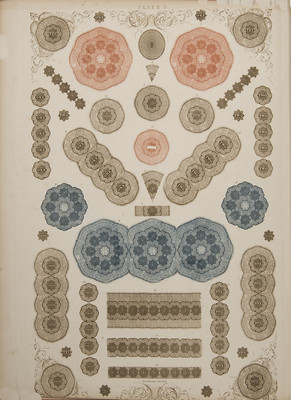
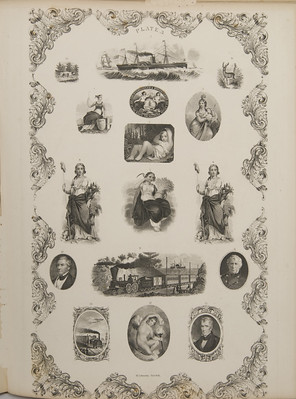
Ormsby (born Hampton Connecticut 1809, died New York 1883) must rank as one of the odder and more intriguing characters of the art world. As this work attests, he was an engraver of the first rank, highly various in the application of his talent. He studied at the National Academy of Design and engraved for Colt Firearms, being responsible for the Texas scene on the 1851 Colt Navy revolver. He had been Foreman at Rawdon, Wright; was proprietor of the New York Bank Note Company and one of the founders of the Continental Bank Note Company, and employed ten to twenty en- gravers in his own establishment, doing much work for the government. But Ormsby also did much work for…others, himself narrowly escaping conviction for counterfeiting (See the fascinating account in Stephen Mihm's fine study A Nation of Counterfeiters Harvard 2007). Ormsby thus occupied the vague and shifting ground between the criminal and the reformer. It is claimed that he assisted Samuel Morse and Henry Munson in the development of the Morse alphabet; it is documented that he transmitted messages at the first showing of the telegraph.
Thus, of this great book (with which valuation by George Kolbe as heads this description there can be little dissent) the dedication: “To the Presidents and Directors of the Banking Institutions of The United States this work, aiming to set forth the greatest Perils to which their Circulation is exposed, and to furnish a Remedy, uniting Artistic Beauty, Economy, and Security against Counterfeiting is respectfully dedicated, with a reliance upon their aid in carrying into effect the important reforms it proposes by their obedient servant the Author.”
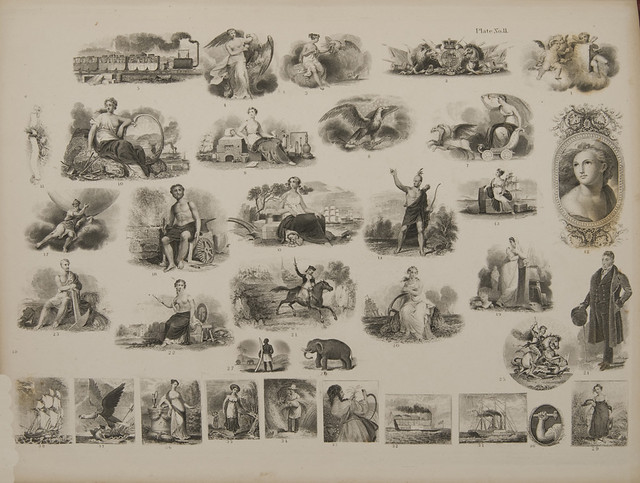
For more information on this and other numismatic literature in his inventory, contact Gil Parsons at parsonsb@sonic.net -Editor

VOCABULARY TERM: MOLDED BORDER
Happy 90th birthday (August 27th)! to Dick Johnson, who submitted this entry from his Encyclopedia of Coin and Medal Terminology. -Editor
Molded Border. A border with many elements, of curves, arcs, angles and planes in one single design that continues around the entire circumference at the edge of a round coin or medal. Molded borders are made with a template and used with clay, wax or plasteline and are almost always made oversize; thus they are ideal for use on oversize patterns that are later pantographically reduced to cut the necessary die.
A molded border is like any border in that it provides a frame for the design, forcing the viewers gaze inward to observe the device and lettering. In addition a molded border is ideal for large medals particularly in that it aids human beings to pick up and hold the piece with their fingers. The multiple elements of the border are, in effect, grip ridges where finger ridges (as in a fingerprint) lock and hold tight on the border ridges. The larger the medal, the more elements of these ridges should be designed into the border.
Designing the molded border. After the design has been sketched on paper, the artist will get a feeling for the best way to frame his design. This will influence his choice of design elements for this frame – to actually shape the object's border. A simple design might require a simple border, say, a plain band. A more complex design will require a border of multiple elements, using a step border (with each level lower than the previous starting at the top rim).
Thus the artist can design the border using as many artistic principles as he wishes. These include harmony, rhythm, symmetry, balance, proportion, dominance, contrast, subordination, variety and repetition. The artist chooses one or more of these with respect to the central design.
Also to add interest the artist may include an element or two which may supplement the border, as a chain for a naval medal, a cable for an engineering medal, or foliage for a horticultural medal. These must be modeled separately just inside the molded border as they cannot be formed with the template. All this adds charm to the total piece.
How molded borders are made. The sketch of the design might include a side sketch of the cross section view of the border elements. When this is approved, the artist begins his modeling. He will secure a large round board, perhaps two feet in diameter. In the exact center will be a hole with a six to eight-inch rod attached to the board. An arm will be mounted on top of the rod, which will swing around the entire circle on the rod. A template will be made in metal the exact shape of the border design in cross section and this will be attached to the end of the arm.
A large roll of clay, wax or plasteline will be laid just inside the edge of the board. After it is pressed down so it adheres securely to the board the arm with the template is lowered into the roll of the modeling material. When the arm is rotated the template forms the design in the soft modeling material.
By rotating the template it will leave a trail of perfectly shaped border. The unwanted material will be pushed ahead of the template and the modeler removes this. By use of his fingers, and moving the template around the center rod several times he will form a perfect multiple-element step border in proper size and shape in quick time.
He can then remove the template, arm and rod (plug the center hole), then add molding material to the base board – forming his background plate. At this point he has a choice of casting a new background plate with just the border in plaster, or he can continue modeling on this form.
There are excellent reasons to cast the border at this time. He can make two casts, one for each side of the coin or medal, this guarantees the border on both sides will be identical (the art principle of repetition). Also casting just the border design in plaster makes it somewhat permanent (and lessens the chance of distorting the soft material border when reaching over it to model something inside).
He can then model the rest of the design, including the device, the lettering and such on this plaster background plate. It might take only an hour or two to do this to make the perfect multiple-element border. See modeling, plaster casting.
Looking for the meaning of a numismatic word, or the description of a term? Try the Newman Numismatic Portal's Numismatic Dictionary at: https://nnp.wustl.edu/library/dictionary
Or if you would like a printed copy of the complete Encyclopedia, it is available. There are 1,854 terms, on 678 pages, in The Encyclopedia of Coin and Medal Technology. Even running two a week would require more than 19 years to publish them all. If you would like an advance draft of this vital reference work it may be obtained from the author for your check of $50 sent postpaid. Dick Johnson, 139 Thompson Drive, Torrington, CT 06790.
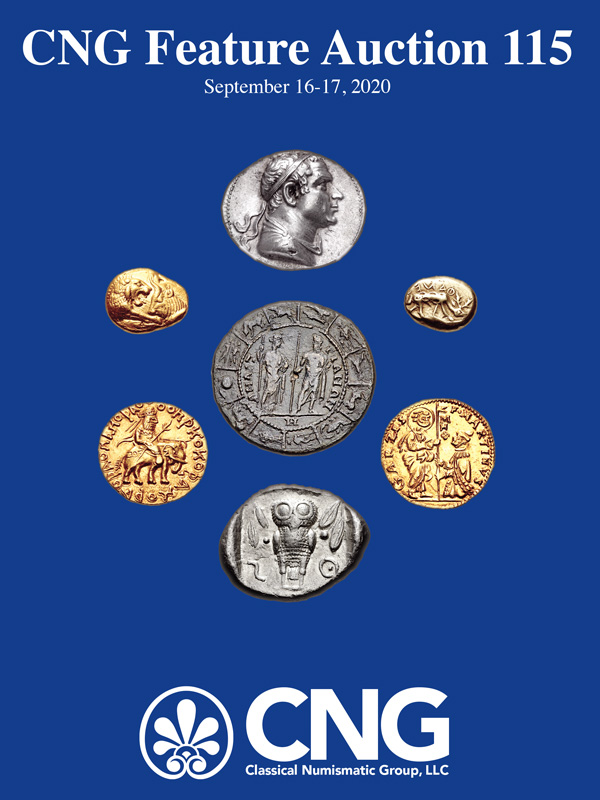
CHARLES TRISSLER STEIGERWALT (1858-1912)
John Lupia submitted the following information from the online draft of his book of numismatic biographies for this week's installment of his series. Thanks! As always, this is an excerpt with the full article and bibliography available online. This week's subject is Lancaster dealer Charles Steigerwalt. I've added images of Carl Waltz, Jr.'s ANA 2018 exhibit, "Publications by Charles T. Steigerwalt". -Editor
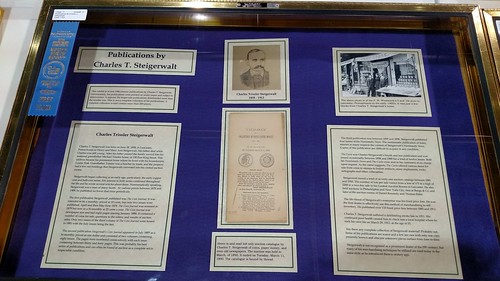
Charles Trissler Steigerwalt (1858-1912), was born on June 28, 1858, at Lancaster, Pennsylvania, son of Henry J. Steigerwalt and Mary Ann Trissler Steigerwalt.
His father died in his youth and was raised by his maternal grandfather Michael Tissler.
He was a contemporary of the Chapman Brothers and like them started dealing in 1878.
He irregularly published The Coin Journal from April 1878 - July 1881, in all of twelve known issues. It became a bi-monthly in 1879; and changed format to that of a newspaper in 1880.
From 1883 to 1884 he published Steigerwalt's Coin Journal.
In 1885, he began issuing fixed price lists until 1911, numbering 71 editions.
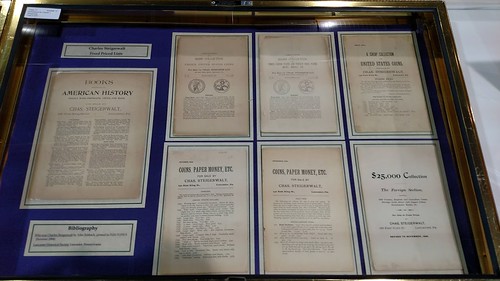
In 1891, he became ANA member number 74.
In 1895, he published Numismatic News.
He became a member of the New York Numismatic Club.
For many years he served as counterfeit detector for the ANA.
He collected antiques, curios, coins, and stamps.
He was a member of the American Philatelic Society and the Philadelphia Stamp Club.
He committed suicide on March 29, 1912, at Lancaster, Pennsylvania. He is buried in Woodward Hill Cemetery, Lancaster, Pennsylvania.
His stamp collection was sold in two parts by Eugene Klein in June 1912.
Note :
The best article ever published on Steigerwalt is by Carl Waltz, Jr, for an ANA 2018 exhibition available online at the Numismatic Bibliomania Society website.
To read the complete article, see:
STEIGERWALT, CHARLES TRISSLER
(http://www.numismaticmall.com/numismaticmall-com/steigerwalt-george)
To view the complete Waltz Steigerwalt exhibit, see:
Carl Waltz, Jr. First place - ANA 2018
"Publications by Charles T. Steigerwalt"
(https://www.coinbooks.org/about/waltz_exhibit.html)

HARVEY STACK'S NUMISMATIC FAMILY, PART 77
The latest article in Harvey Stack's blog series is about New York collector Ellis Robison. -Editor
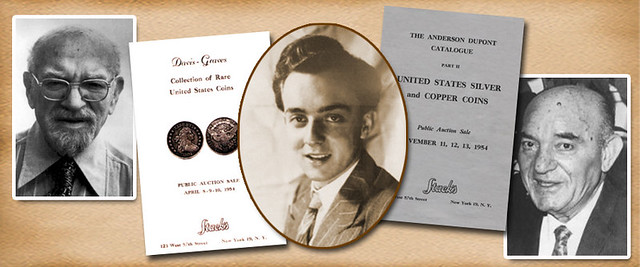
The year 1979 brought quite a few important public auctions. At the time, Stack's was the leading public auctioneer in the coin hobby, as we sold many of the major collections being offered. After Stack's helped to build their collections, many of our clients would give us the opportunity to "return their treasures" to the marketplace, for new generations of collectors to enjoy. In addition, our reputation was such that we were selected by banks, trust companies, colleges, universities and museums to assist in appraising their holdings and often selling numismatic material so that they could better finance their central purpose. The number of sales and rare coins we were given to sell at auction kept us busy during the year, and the "name" sales added to our reputation, bringing in even more consignments.
One such name collection was the fabulous Robison Collection of U.S. Gold Coins which we brought to market in January 1979. The formation of the Robison Collection was a family affair with Ellis and Doris Robison as partners. Ellis was a successful pharmaceutical distributor in upper New York State. He headed John L. Thompson and Co., of Troy, N.Y, one of the country's oldest wholesale pharmaceutical firms, which had served New England drugstores for close to two centuries. He was dedicated to education and had contributed for decades to colleges and universities in America. Many an athletic field, herb garden and foundations are named after him and his family. He was especially interested Cornell University, his alma mater, and in Rensselaer Polytechnic Institute. The proceeds of this sale were designated to benefit the cultural and athletic endeavors of these two institutions.
To visit Ellis Robison in Troy was like turning back the clock, for the company occupied a huge red building on Main Street that looked just as it had a century before. Walking in, you found yourself in a large work room, surrounded by many desks, all open to the public. A large, waist high wooden gate stood between the office and visitors. The receptionist was the immediate greeter, who sat behind a phone board, which used the early "plug-in" system to transfer calls and to page people. The lighting was incandescent bulbs with lamp shades.
As a visitor, you were announced to Mr. Robison. When entering his office, which was almost as deep as the whole building, you found Ellis at a large mahogany desk, covered with papers, (orders and correspondence) and before his desk was a giant conference table where the Board would have meetings. Ellis was a wonderful host, always greeting me with a warm smile and conversation. He would ask what I had brought, as I was usually delivering the most recent group of coins he had won at one of our sales. His usual method for bidding would be to contact us by phone or mail to convey what he wanted, how much we should bid and to request that we carefully examine the coins to be certain that they would match the balance of his collection.
I enjoyed every trip I made to Troy. I would arrive by 10 AM, driving directly to Troy to meet with him. We would review and discuss the coins and at exactly 12 PM we left the office and went to the famous Troy Club for lunch. Ellis knew everyone who ate there, and he enjoyed introducing me as his special guest for the day, and telling them I was there to assist him while he built a major U.S. coin collection. We left the club by 1 PM and then continued to work through about 3 PM, at which time I would head home. Ellis wanted me to be able to drive in daylight as much as possible. While the story of Ellis Robison and how the Robison Collection was built is unique, Stack's involvement in helping collectors to build fine collections was not unusual. We were committed to providing our clients with excellent customer service and to building personal relationships with them.
Ellis Robison had set a goal of trying to get one coin of each that was minted by the United States Mint, 1793 to date, including mintmarks. He wanted coins that graded from Very Fine to Mint State. While he also collected Proofs, if available, he liked coins that were made for circulation, for he was able to envision who might have used or owned it before him.
The January 1979 Robison Collection of U.S. Gold Coins had many highlights, including:
GOLD DOLLARS: A virtually full set, including 1855-D, 1856-D, 1861-D, 1870-S, and 1875.
QUARTER EAGLES: The set started with 1796, (both types), and featured 1797, 1808, 1841, 1843-C, 1848 CAL, 1856-D, and 1875. It was almost a full set.
THREE DOLLAR GOLD: Virtually complete, including 1854-D, 1875 and 1876.
HALF EAGLES: An extensive set, highlighted by 1795 Small and Large Eagle, 1796, a long run from 1807 to 1837, 1861-D and 1929.
EAGLES: Almost complete from 1795-1804, plus 1858, 1907 Rolled and Wire edges, 1920-S, 1930-S and other scarce and rare dates.
DOUBLE EAGLES: An almost complete set highlighted by 1862 Proof, 1870-CC, 1881, 1882, 1883, 1885, 1886, and 1887, together with 1920-S, 1926-S, 1926-D, 1927-S, 1930-S, 1931 and 1932.
Overall the sale contained 1,042 lots and was one of the most complete offerings of gold in 1979.
To read the complete article, see:
Harvey Stack Remembers: Growing up in a Numismatic Family, Part 77
(https://www.stacksbowers.com/News/Pages/Blogs.aspx?ArticleID=Harvey-Stack-Remembers-Part-77)
To read the earlier E-Sylum article, see:
HARVEY STACK'S NUMISMATIC FAMILY, PART 76
(https://www.coinbooks.org/v23/esylum_v23n33a18.html)

COIN DESIGNER IAN RANK-BROADLEY'S DIANA STATUE
Artists known to numismatists for coin designs often have far more work in their portfolio. Ian Rank-Broadley, whose depiction of the Queen, which has appeared on coins of the UK and Commonwealth since 1998, is creating a statue of Princess Diana. -Editor
Plans for a new Princess Diana statue to be installed at Kensington Palace next year 'will help to heal old wounds' after an alleged rift between Princes William and Harry.
A statement on behalf of the Duke of Sussex and Duke of Cambridge issued by Kensington Palace read: 'The statue that Prince William and Prince Harry have commissioned to commemorate their mother, Diana, Princess of Wales, will be installed next year on what would have been her 60th birthday.'
The statue was commissioned to mark the twentieth anniversary of Princess Diana's death and recognise her positive impact in the UK and around the world.

It will be installed in the Sunken Garden of Kensington Palace on 1st July 2021, marking The Princess's 60th birthday.
The brothers announced the commission of the statue two years ago on the 20th anniversary of Princess Diana's death, and the initiative is one of their few remaining join ventures after a rift between the siblings and Harry's move to LA.
The statue's sculptor, Ian Rank-Broadley, is most recognised for his depiction of the Queen, which has appeared on all coins in the UK and Commonwealth since 1998.
He also designed a gold coin marking the Queen's diamond jubilee in 2012.
The statue's sculptor, Ian Rank-Broadley, is most recognised for his depiction of the Queen, which has appeared on all coins in the UK and Commonwealth since 1998.
He also designed a gold coin marking the Queen's diamond jubilee in 2012.
To read the complete article, see:
Plans for new Princess Diana statue to be installed at Kensington Palace next year 'will help to heal old wounds' between Princes William and Harry
(https://www.dailymail.co.uk/femail/article-8673665/Prince-William-Prince-Harry-offer-update-Princess-Diana-statue.html)
SCULPTURES BY U.S. COIN DESIGNERS
The previous article in this issue discussed a planned statue by artist Ian Rank-Broadley of Princess Diana in London. I worked in Central London for some months in 2007, and was delighted to discover the flat my company rented for me was within a short walk of Hyde Park and Kensington Palace. I'd love to get back someday and see the old neighborhood.
On the topic of sculpture by coin artists, I had some email correspondence this week with Garrett Ziss, who recently visited my old hometown of Pittsburgh and saw two great outdoor sculptures by U.S. coin designers.
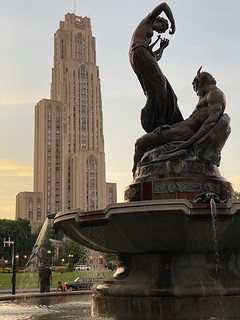
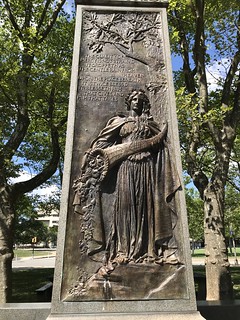
At left is "Song to Nature", a fountain in front of the University of Pittsburgh's Frick Fine Arts building, which was the only three-dimensional work of Victor David Brenner, designer of the Lincoln Cent. On the right is the smaller Christopher Lyman Magee Memorial which was designed by Augustus Saint-Gaudens. It's within sight of the Brenner fountain, directly in front of the entrance to the Carnegie Library of Pittsburgh (pictured in another article in this issue). Images courtesy Garrett Ziss. Thanks! -Editor
For more information on the Brenner Fountain, see:
Mary E. Schenley Memorial Fountain/Song To Nature
(http://friendsofpantherhollowlake.blogspot.com/2015/06/mary-e-schenley-memorial-fountainsong.html)
Garrett adds:
"There are quite a few sculptures around the country with a connection to U.S. coin designers. During a trip to Washington D.C. in February 2013, I came across two large sculptures by James Earle Fraser flanking the entrance to the National Archives building. It will be interesting to see if E-Sylum readers provide information on sculptures that they have seen around the country!"
While numismatic literature often does include references to other works by coin designers, the topic would make a great book in itself. Tell us about such works you've seen or learned about. Two more Pittsburgh works I can add are plaques of Washington and Lincoln by Victor David Brenner hanging in the lobby of the City-County building downtown. -Editor
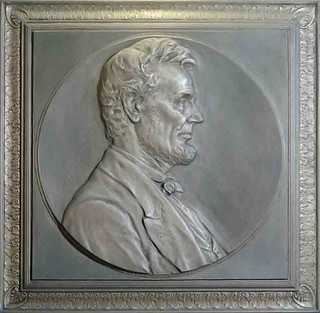
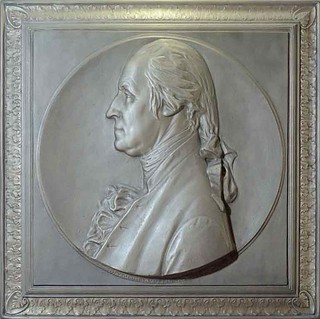

THE HISTORY OF THE GOLD STANDARD
The upcoming Künker Auction features quite a number of great gold coins. This article by Ursula Kampmann lays out the history of the gold standard illustrated with lots in the sale. Some great eye candy here, including some nice U.S. rarities. -Editor
The Gold Standard: How and Why Gold Became the Most Important Metal For Coins
For centuries, silver was the preferred metal across the world when it came to coins and savings. In the 19th century, that changed. We'll explain how and why, and illustrate what happened with the help of coins that will be coming under the hammer on 30 September and 1 October 2020 in the Künker Auction entitled ‘A Numismatic Gold Treasure'.
By Ursula Kampmann on behalf of Künker
It actually all started with Sir Isaac Newton, or rather, with the huge gold deposits discovered in Brazil, and the trouble they caused him. These finds pushed down the price of gold in such a way that the established mint ratio between gold and silver coins had to be constantly recalculated. Even Isaac Newton – who was, at the time, master of the Royal mint in the Tower of London – failed to keep up with these developments. In his final adjustment in 1717, he valued the silver coins too highly. This effectively led to them disappearing from circulation.
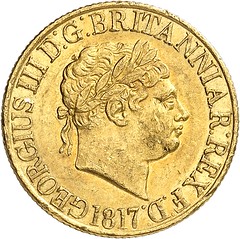
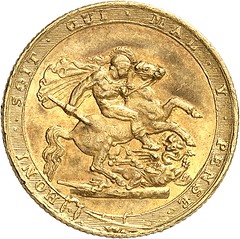
01 - Great Britain. George III. 1/2 Sovereign 1817, London. Rare in this condition. Nearly FDC. Estimate: 800 euros. From Künker Auction 340 (2020), No. 2777.
And so, England switched to the gold standard in practice long before a corresponding law was passed. It wasn't until 1774 that parliament confirmed gold coins as legal tender. Silver coins only had to be accepted up to the amount of 25 pounds.
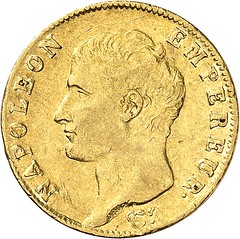
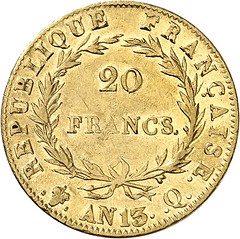
02 - France. Napoleon. 20 francs AN 13 (= 1804/5) Q, Perpignan. Only 522 pieces minted. Nearly extremely fine. Estimate: 2,000 euros. From Künker Auction 340 (2020), No. 3340.
England therefore played a rather special role. In most other countries across the world, silver remained the metal of choice for minting coins. France, on the other hand, worked with bimetallism. Napoleon's 1803 monetary law had established the long-standing legal mint ratio of 1 (gold) : 15.5 (silver).
Three Possible Options
And so, at the start of the 19th century, there were three possible options for a national currency:
- The gold standard
- The silver standard
- A mixed standard that uses both gold and silver, with a fixed rate of exchange between them
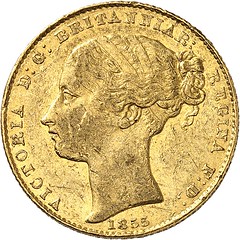
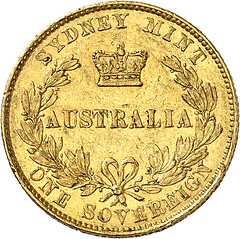
03 - Australia. Victoria. Sovereign 1855, Sydney. Very fine to extremely fine. Estimate: 2,000 euros. From Künker Auction 340 (2020), No. 2585.
Price Fluctuations in the Ratio Between Gold and Silver
In 1848, gold was found in California; in 1851, it was found in Australia. This considerably
increased the amount of gold mined around the world. While 15.3 tonnes had been mined
worldwide between 1801 and 1810, this amount reached 76.7 tonnes between 1841 and 1850 and
then climbed to 567.8 tonnes in the first decade of the 20th century. In other words, there was
suddenly a lot more gold in circulation than there had been for centuries.
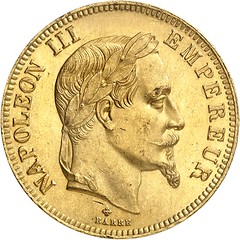
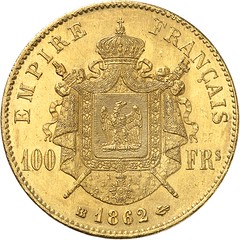
04 - France. Napoleon III. 100 francs 1862 BB, Strasbourg. Only 3,078 specimens minted. Extremely fine to FDC. Estimate: 1,700 euros. From Künker Auction 340 (2020), No. 3767.
This caused problems for every nation whose currency, like France's, was based on a fixed ratio between gold and silver coins. Some clever contemporaries used the exchange rate differences to make a hefty profit. They exported some here and imported some there, successfully lining their own pockets with a handsome profit. The result: at times, France had far too few silver coins, while the United States of America had far too few gold coins.
The enormous price fluctuations were therefore a disaster for lawmakers. No sooner had they established the ratio between gold and silver coins than the exchange rate changed and a new law would have to be passed in order to prevent losses for the treasury.
And it didn't make matters any easier when, in 1859, a huge deposit of silver ore was discovered in Virginia City. The mines there would yield almost 7 million tonnes of pure silver by the time they closed. As a result, the price of silver also plummeted. In the long term, it fell from 60 p in 1870 to 52 p (1880) to 24 p (1910).
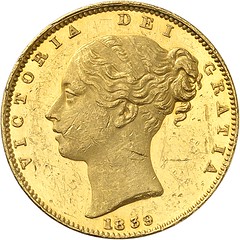
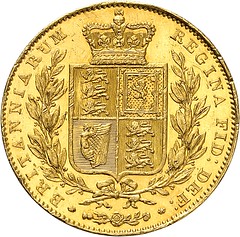
05 - Great Britain. Victoria. Pattern for the Sovereign of 1839, London. Very rare. Extremely fine from Proof. Estimate: 2,000 euros. From Künker Auction 340 (2020), No. 2838.
Theory and Practice: Why Did the Gold Standard Prevail? Researchers have established two different theories as to why the global economy ended up committing to the gold standard in the long term. One theory claims that people no longer wanted to live with the constantly fluctuating prices of precious metals. The other theory claims the cause is rooted in nations' efforts to adapt their own monetary system to the nation with which they did most business.
Well, at the start of the 19th century, there were two nations vying for economic leadership: Great Britain and France. We know who came out on top. Thanks to industrialisation, London became the most important financial centre in the world. Two thirds of all world trade were financed by the pound sterling. Switching your currency to the gold standard therefore gave you privileged access to this financial centre.
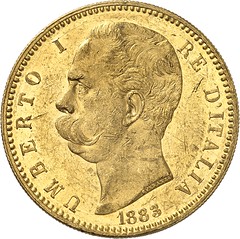
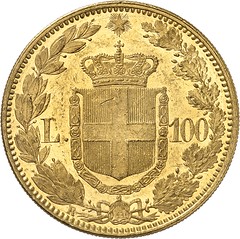
06 - Italy. Umberto I. 100 lira 1883, Rome, in accordance with the specifications of the Latin Monetary Union. Only 4,219 specimens minted. Nearly extremely fine. Estimate: 2,500 euros. From Künker Auction 340 (2020), No. 2852.
France and the Latin Monetary Union
But France, with its bimetallism, was also a viable option. After all, the country had spread its
monetary system during the Napoleonic Wars. There were French coins circulating in Belgium,
Switzerland and Italy and vice versa. This afforded the advantage of a greater economic area, but
also the disadvantage that each nation pursued its own agenda.
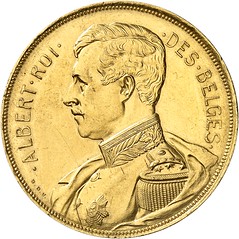
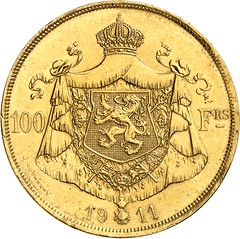
07 - Belgium. Albert I. Pattern of 100 Francs 1911, Brussels, in accordance with the specifications of the Latin Monetary Union. Extremely rare. Extremely fine. Estimate: 50,000 euros. From Künker Auction 339 (2020), No. 2202.
Just think about when the Comstock Lode was discovered in Virginia City 1859 and its yield caused the price of silver to collapse. Italy was the first country in the French currency area to adapt to this development. In 1862, it changed the alloy used to make the circular blanks for its low-value coins, decreasing the silver content from 900 to 835 per mille – much to the annoyance of France, where coins were minted with 900 per mille. In other words: the aforementioned clever contemporaries imported French silver coins into Italy, had them smelt down and reminted there into more Italian coins of the same denomination and then reimported them into France to change into other French silver coins and so on.
In 1864, France found itself forced to drop the fineness of its coins to 835 per mille. But at that time, Switzerland had already decided to mint silver coins from an alloy of 800 per mille silver. And be sure those oft-mentioned clever contemporaries planned to do what they always did: they made a good profit at the expense of the general public.
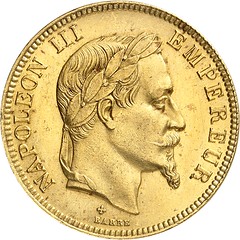
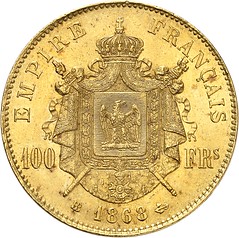
08 - France. Napoleon III. 100 francs 1868, Strasbourg, in accordance with the specifications of the Latin Monetary Union. Only 789 specimens minted. Extremely fine to FDC. Estimate: 2,200 euros. From Künker Auction 340 (2020), No. 3779.
The Latin Monetary Union of 1865 was actually nothing other than an attempt to make this impossible. Although some representatives at this conference lobbied vehemently for the gold standard, France prevailed with its bimetallic system. However, it failed to push the system through at an international level during the large monetary conference called by France in 1867.
At that point, it became clear that there was no future in the bimetallic system.
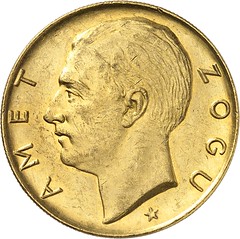
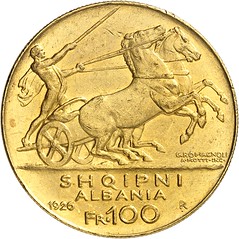
09 - Albania. Zog I. 100 francs 1926, Rome, in accordance with the specifications of the Latin Monetary Union, without being a member of the Latin Monetary Union. Extremely fine. Estimate: 1,750 euros. From Künker Auction 340 (2020), No. 2521.
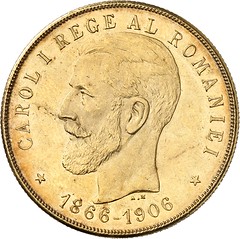
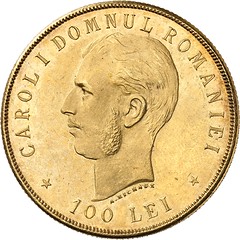
10 - Romania. Carol I. 100 leu. 1906, Brussels, in accordance with the specifications of the Latin Monetary Union, without being a member of the Latin Monetary Union. Only 3,000 specimens minted. Extremely fine to FDC. Estimate: 3,000 euros. From Künker Auction 340 (2020), No. 2983.)
Although the wonderfully colourful maps suggest time and again that the world was enthusiastic about the Latin Monetary Union, the fact that individual nations issued coins in the same weight as the golden 20-franc or silver 5-franc pieces did not mean that they wanted to preserve the bimetallic system. They simply wanted to have coins that were compatible with the French coins.
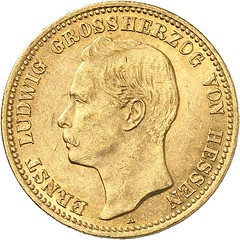
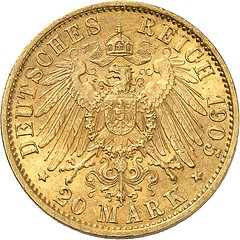
11 - Germany/Hesse. Ernst Ludwig. 20 mark 1905. Extremely fine +. Estimate: 750 euros. From Künker Auction 340 (2020), No. 2705.
Germany Opts For the Gold Standard
In 1854, Portugal, a key trading partner of England, adopted the gold standard without any major
consequences. When the newly founded German Empire opted for the gold standard, the results
were very different. After all, after its victory over Napoleon III, Germany had become one of, if
not the most important economic power in Europe. And Germany took other nations with it: the
Netherlands and the Scandinavian nations adopted the gold standard shortly afterwards.
This wasn't a particularly big step for these nations; it was hardly noticeable for their citizens.
This is because – and this point cannot be stressed enough – the gold standard did not mean that there weren't any silver coins in circulation. It simply meant that all means of payment, i.e. small coins, bank deposits and banknotes, could be converted into gold at any time.
By the way, it's a myth that the French coins paid as war reparations in 1871 were reminted into 20-mark pieces. Of the 5 billion marks paid, 4.248 billion came in bills of exchange denominated in English pounds. Germany exchanged these papers in London for the gold it needed to produce its currency. The silver coins, which were withdrawn from circulation and whose raw material was thrown back onto the market, caused the price of silver to fall even further.
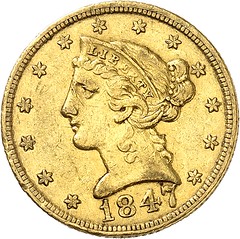
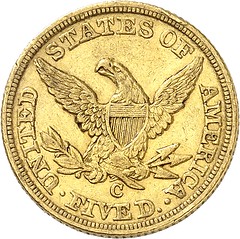
12 - USA. 5 dollars 1847, Charlotte. Very rare. Very fine +. Estimate: 8,000 euros. From Künker Auction 340 (2020), No. 3033.
Silver Producers in the USA
When the United States of America created the dollar, they were largely dependent on French
loans. For example, it was thanks to these loans that the central bank ‘Bank of North America'
was founded. So, it's no wonder that the United States of America modelled their monetary
system after the French example and built it on both metals, gold and silver, despite the rich gold
reserves in California.
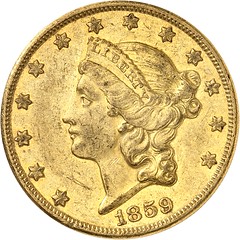
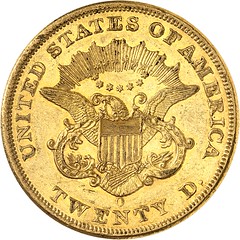
13 - USA. 20 dollars 1859, New Orleans. One of the best preserved specimens. NGC AU58. Estimate: 25,000 euros. From Künker Auction 340 (2020), No. 3229.
And then in 1859, as mentioned earlier, the Comstock Lode was discovered. This discovery had an impact on the price of silver. During a crisis that would go down in history as the ‘Long Depression', the government established a series of measures, including the adoption of the gold standard in the Coinage Act of 1873.
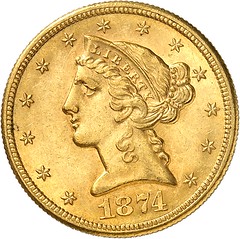
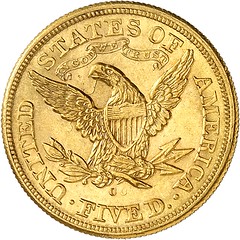
14 - USA. 5 dollars 1874, Carson City. Extremely rare in this condition. NGC MS61+. Estimate: 10,000 euros. From Künker Auction 340 (2020), No. 3073.
It was only three years later that there was any serious resistance. The Coinage Act became the ‘Crime of ‘73'. The silver producers developed a superb public relations strategy that concealed their own interests to such an extent that, to this day, you will read occasionally in books about American history that it wasn't their own overproduction that caused the price of silver to fall, but rather the sale of silver in Germany following the currency changeover. In fact, in 1878, the Bland-Allison Act was passed, over the veto of President Hayes, which forced the treasury to purchase a certain amount of silver every year and use it to mint silver coins. As this silver was bought at the market price, this development was less about returning to a bimetallic system and more about support buying in favour of the country's own silver producers.
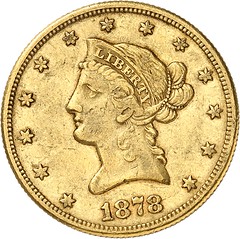
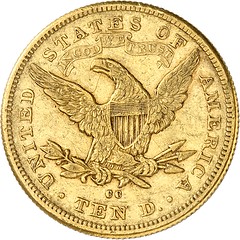
15 - USA. 10 dollars 1878, Carson City. Only 3,244 specimens minted. NGC AU50. Estimate: 3,000 euros. From Künker Auction 340 (2020), No. 3206.
In the same year, the United States of America organised an international monetary conference, where they, as one of the biggest producers of silver in the world, attempted to convince other countries to switch to a bimetallic monetary system so that they could sell their own silver around the globe. The conference failed. Germany didn't even send a representative, while the British delegates were ordered to block all proposals.
The ever-growing gap between supply and demand remained a problem. In 1890, the American Congress passed the Sherman Silver Purchase Act, which replaced the Bland Allison Act and meant that the federal government became the second-biggest buyer of silver in the world. By the way, the biggest buyer was the British government in India, which was attempting to hold up the rapidly falling price of silver and therefore support the Indian rupee.
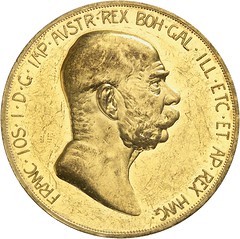
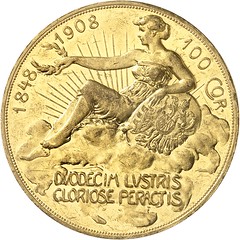
16 - Austria. Franz Josef I. 100 krone 1908, Vienna. NGC PF60. Estimate: 2,500 euros. From Künker Auction 340 (2020), No. 2922.
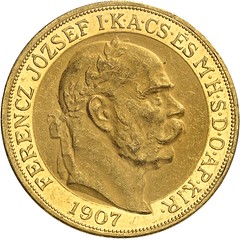
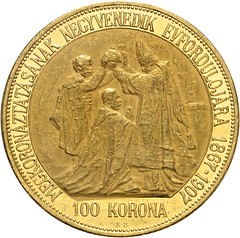
17 - Hungary. Franz Josef I. 100 krone 1907, Kremnica. Extremely fine +. Estimate: 2,500 euros. From Künker Auction 340 (2020), No. 3018.
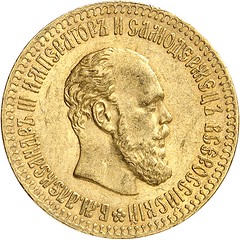
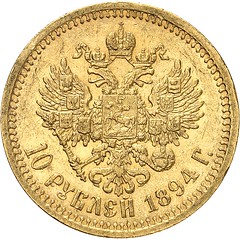
18 - Russia. Alexander III. 10 ruble 1894, St. Petersburg. Only 1,007 specimens minted. Nearly extremely fine. Estimate: 2,000 euros. From Künker Auction 340 (2020), No. 3007.
In this one year, 1890, the price fell from 1.16 dollars per ounce to 0.69 dollars. On 1 November 1895, the treasury temporarily stopped issuing silver dollars.
And it wasn't alone: over the course of the 1890s, Russia, Japan and the Habsburg Monarchy also switched over from their bimetallic systems to the gold standard. France and with it the countries of the Latin Monetary Union – with the exception of Italy – had already done this in 1878.
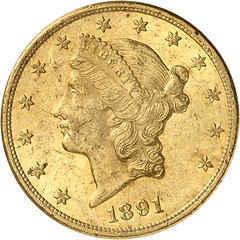
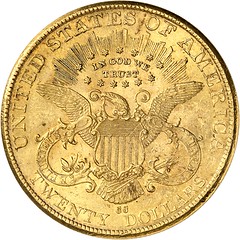
Commercial Interests Versus Agricultural Society
The Sherman Silver Purchase Act of 1890 had been passed primarily because it caused inflation
and therefore enabled small farmers to pay off their debts with cheap silver dollars. And that
brings us to a third possible explanatory model of why the gold standard triumphed in the 19th
century.
Never before in history had society been monetised to this extent. In Great Britain, the amount of money in circulation increased from 255.4 million pounds in 1850 to 11,303.6 million pounds in 1913. The proportion of coins – as opposed to bank notes and bank deposits – fell from 23.9% to 12%. A similar pattern can be observed in Germany, where 1.38 billion mark in 1875 increased to 18.31 billion mark in 1913, while the proportion of coins fell from 42.4% to 18.3%.
This monetisation went hand in hand with the transition of the economy from self-sufficiency to a society based on the division of labour. Those who worked in the city depended on their savings retaining value and preferred stable gold, while the farmers, with their ever-increasing mortgages, relied on inflation to help them pay off their loans.
The almost worldwide transition to the gold standard is a sign that the most important segments of a country's population were no longer based in its rural areas, but in its cities.
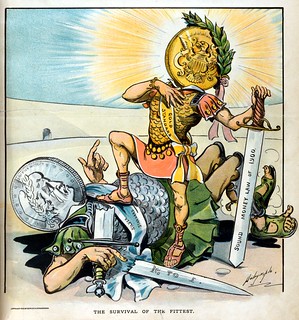 Gold as a Safe Haven
Gold as a Safe Haven
Even today, despite all the fluctuations in the price of gold, this precious metal is still considered
a safe haven. Governments still encourage the flow of gold into their own country. For example,
to this day, the purchase of gold bullion products is exempt from VAT in many countries, while
all other bullion products made from precious metals, such as silver, platinum and rhodium, must
be taxed.
At no point did the gold standard mean that all coins of a certain country had to be made from gold. It merely comprises:
- The unlimited convertibility of banknotes and silver coins into gold
- The unrestricted import and export of gold
- The linking of a country's money supply to its gold reserves
And this is what caused the gold standard to fail in the long term. No country in the world had the discipline to issue only as much paper money as its gold reserves allowed, even in political emergencies. And in Europe, this meant that the system collapsed at the beginning of the First World War. The high demand for physical gold among citizens could no longer be met by the countries' gold reserves.
Although many countries returned to the gold standard after the end of First World War, this collective realisation that only physical gold can be relied upon to retain its worth means that gold coins are still the first choice when it comes to safely storing assets during a crisis.
The Künker Auction entitled ‘A Numismatic Gold Treasure' will be a brilliant opportunity to combine collecting with investing in gold.
To visit the Künker website, see:
https://www.kuenker.de/en
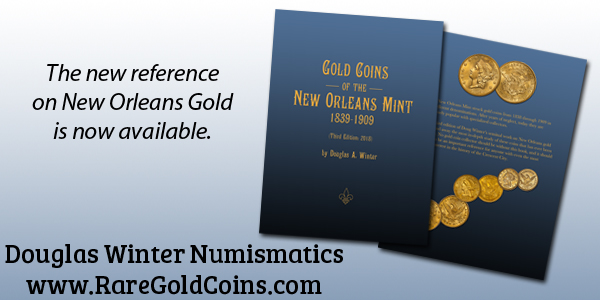
DAUER COLLECTION OF CIVIL WAR ENCASED POSTAGE
In September Robert A. Siegel Auction Galleries, Inc will be offering the Drs. Joanne and Edward Dauer Collection of Civil War Encased Postage. -Editor

The Dauer collection, containing rarities and pieces of exceptionally choice quality, will be featured in Siegel's Fall 2020 auction of United States stamps
THE FIRST YEAR OF THE AMERICAN CIVIL WAR WAS marked by a surprising show of force by the Confederate military and severe disruptions of trade, which had an unsettling effect on the financial markets. The U.S. Treasury suspended all specie payments in December 1861, creating even greater anxiety and causing speculators and the public to hoard silver coins. The devaluation of paper currency against gold and silver added fuel to the fire, and by mid-1862 a vast quantity of silver and even copper-nickel coinage was removed from circulation. The 1862 coin shortage led to private stopgap measures in the form of copper tokens and scrip.
Postage stamps, which had a fixed value in denominations of less than one dollar, were also used as an exchange medium, but they had obvious physical shortcomings. Continuous handling of a small piece of gummed paper quickly rendered a stamp useless, and the Post Office refused to exchange new stamps for damaged ones.
To remedy the coin shortage, Secretary of the Treasury Salmon P. Chase proposed the idea of postage stamp currency. President Lincoln signed the congressional Postage Currency Act on July 17, 1862. The act was drafted and passed without consulting postal officials, and its wording seemed to authorize the use of postage stamps as currency, rather than authorizing a special issue of postage currency. In response to the published reports of the new Postage Currency Act in July 1862, the public demand for postage stamps exploded.
John Gault, a small-time inventor and purveyor of munitions, was in New York City in July 1862 and prepared to launch his patented “New Metallic Currency.” Gault's concept was simple: insert a postage stamp into a sealed metal case with a mica window, through which the stamp could be seen. Gault's encased postage stamps were produced at the Scovill Manufacturing Company, a button and token maker in Waterbury, Connecticut.
Gault's encasements were promoted as something more than a practical coin substitute. Businesses could have advertisements die-stamped into the metal backing, which made them an effective marketing tool. Hotels, patent medicine manufacturers, dry goods merchants, hatters, a jeweler, liquor and wine merchants, and an insurance company were among Gault's 31 customers.
One of the earliest collectors was a well-known philatelist named Charles Gregory. Among the other prominent pioneer collectors of encased postage are Hiram E. Deats, C. S. Wilcox and William S. Appleton. Just prior to and after World War II the field was dominated by Colonel Green, T. James Clarke, F. C. C. Boyd, Josiah K. Lilly Jr., J. T. Temple and Arnold Perl. The successor to these collectors was John J. Ford Jr., whose outstanding collection was sold by Stack's in 2004. In the wake of the Ford sale, collectors such as Frederick R. Mayer, Dana Linett, “Summit” (Siegel Sale 955), Donald Kagin, Dr. William A. Litle, and, of course, Drs. Joanne and Edward Dauer, emerged to the foreground.
Drs. Joanne and Edward Dauer have spent a lifetime as collectors. Their interest includes stamps, paper money, historical documents, and many other areas. They started collecting encased postage in 2007 and strived to obtain the finest and rarest specimens with attention to quality. They thank their close friend, Sonny Hagendorf, for his guidance and assistance in the acquisition of many great items over the years. As a collector once told them, “We are only custodians of these historical items during our lifetime; it is time to pass them on to another generation of collectors”.
The Fall 2020 U.S.stamp auction catalogue, featuring the Dauer Encased Postage collection, will be available in September
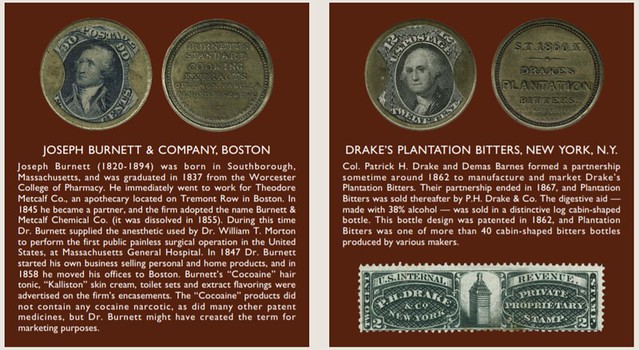
Encased Postage Stamps were the core of my own Civil War collection (sold by American Numismatic Rarities in 2006). I purchased some of my pieces from an earlier Siegel sale. I also helped my friend Dr. Charles Gratz form his collection (which was sold by Early American History Auctions in 2015). I'm looking forward to the catalog of the Dauer collection. -Editor
To read the complete article, see:
The Drs. Joanne and Edward Dauer Collection Civil War Encased Postage
(https://siegelauctions.com/desp/DrsDauer.pdf)
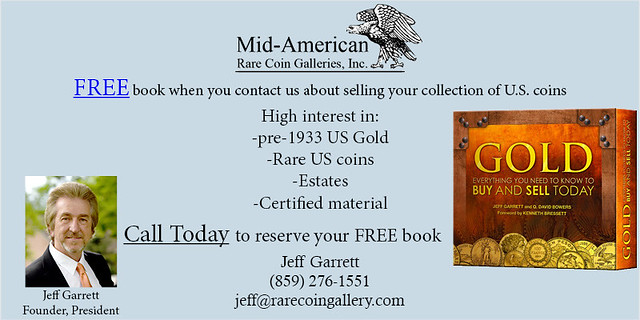
THE FIRST LADIES OF ROME
The Summer 2020 issue of Classical Numismatic Review from Classical Numismatic Group, LLC has been published. Managing Director Mike Gasvoda wrote the following overview of the lead article. -Editor
The introductory article by our own Julia Trocmé-Latter provides an enjoyable introduction to this important part of Roman coinage. Roman Empresses filled many roles in the Roman Empire, not unlike modern-day Presidential First Ladies. There are stark contrasts to their modern-day counterparts as well. But the importance of these First Ladies is implicit by the sheer numbers of coins struck in their honor.
The extensive use of First Lady portraits on coinage comes to a zenith in the 2nd and 3rd centuries AD beginning with Faustina Senior and extending through the reign of Elagabalus. We have focused not only on exceptional portrait styles but have included many interesting reverse types as well. It is often through the reverse themes that we learn the most about how Roman rulers wanted to have their first ladies recognized. These reverses include virtues, family promotion, and occasionally specific references to glorify projects promoted by these first ladies. It is a fascinating area to study and collect. We hope you enjoy this special edition.
Here's a short excerpt and a couple selected images; see the complete article online - it's an excellent overview of the topic, and the issue features a large number of coins honouring important Imperial women. -Editor
Empresses in history and on coins
By Julia Trocmé-Latter
The very presence of imperial women on Roman coins speaks to the desire of the ruling dynasty to cast itself as an idealized Roman family. At this time, the most important public role for women was materfamilias, whose societal function was to bear and rear children (particularly sons) for the Empire. So, the decision to feature the wives of emperors on the imperial currency, even when heirs did not yet exist, served as a promise of dynastic continuity and stability.
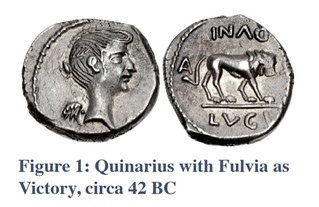 Roman society was decidedly male-dominated, with politics and government an exclusively male preserve. Yet women could
and did exert a powerful influence behind the scenes, serving as advisors and sounding boards for their political husbands and
fathers. And, from the third century on, there were several periods when de facto feminine control of government was more or
less accepted by all levels of society.
Roman society was decidedly male-dominated, with politics and government an exclusively male preserve. Yet women could
and did exert a powerful influence behind the scenes, serving as advisors and sounding boards for their political husbands and
fathers. And, from the third century on, there were several periods when de facto feminine control of government was more or
less accepted by all levels of society.
Living women associated with powerful men had been appearing on Roman coins (as opposed to provincial coins, where the rules were more flexible) since the Second Triumvirate, but almost always disguised as goddesses or allegorical figures. Mark Antony's first wife Fulvia, who was very politically active, was portrayed as Victory on silver quinarii struck before her death in 40 BC. Octavia, Antony's next wife, appeared on provincially struck coins with her husband without any pretence of disguise (it helped that she was the sister of Antony's co-ruler Octavian and thus served as a symbol of their short-lived partnership). Still, the “disguised portrait” convention continued into the early Empire, with Augustus's daughter Julia depicted as Diana, or his wife Livia as the personification of Justice or Pax, as early examples. Caligula issued a sestertius with his three sisters on the reverse, all portrayed as allegorical figures considered appropriate for women (namely Securitas, Concordia, and Fortuna), but the identity of the three cannot be contained by their divine guises, as their names are unambiguously arranged around them.
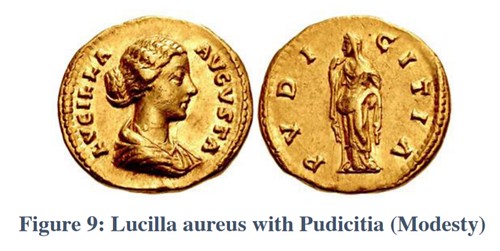
To read the complete issue, see:
Classical Numismatic REVIEW Volume XLV, No. 2 • Summer 2020
(https://cngcoins.com/photos/cng_links/CNR_August_2020.pdf)
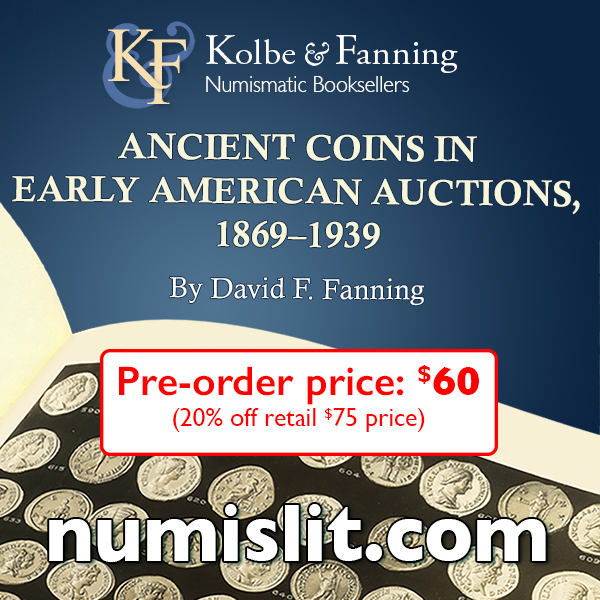
NEW GOLD COIN HOARD FIND IN ISRAEL
Alan Luedeking, Leon Saryan and several other readers forwarded links to stories about a recent find of a gold coin hoard in Israel. Thanks! -Editor
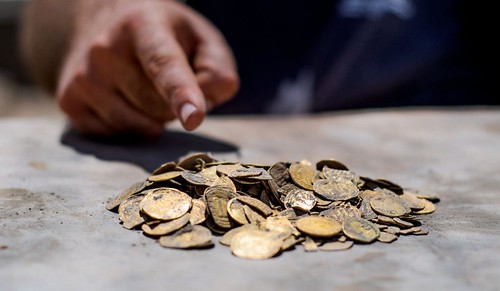
A pair of 18-year-olds recently made an unexpected discovery when they unearthed a cache of 424 rare golden coins while volunteering at an archaeological dig conducted by the Israel Antiquities Authority. Such a large amount of gold is, it goes without saying, extremely valuable; it had been buried inside a clay jar for safekeeping more than 1,000 years ago.
“I dug in the ground and when I swept away the soil, I saw what looked like very thin leaves,” one of the teenagers, Oz Cohen, said in a statement. “When I looked again I saw that they were gold coins. It was really exciting to find such a special and ancient treasure.”
In addition to full gold dinar coins, the hoard also contains 270 smaller fragments, reports Haaretz. In 9th century Israel, cutting gold and silver coins to make small change in lieu of cheaper bronze and copper currency that had become scarce was a common practice, according to Robert Kool, a coin expert with the Israel Antiquities Authority.
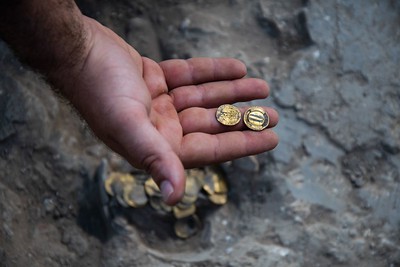
The 24-carat pure gold coins date to the Abbasid period, around 1,100 years ago. The Abbasid Caliphate was a Muslim dynasty during what is known as the Golden Age of Islam, ruling over Persia and North Africa from its capital in Baghdad.
But the coins also include a fragment of a gold solidus minted in Constantinople featuring Theophilos, the Byzantine emperor from 829 to 842—possible evidence of trade and cultural exchange between the two ancient empires. It is the only coin of its kind found in Israel to date.
“Finding gold coins, certainly in such a considerable quantity, is extremely rare,” said Liat Nadav-Ziv and Elie Haddad, who oversaw the dig, in a statement. “The person who buried this treasure 1,100 years ago must have expected to retrieve it, and even secured the vessel with a nail so that it would not move.”
To read the complete article, see:
Two Teens Volunteering on an Archaeological Dig in Israel Uncovered Solid-Gold Treasure Buried More Than 1,000 Years Ago
(https://news.artnet.com/art-world/israeli-teens-discover-ancient-gold-coins-1903948)
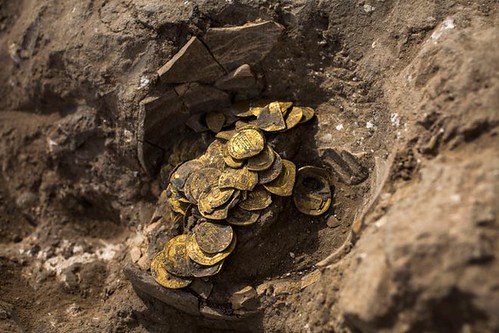
Thanks also to Dick Hanscom, Aaron Oppenheim, Jerry Norton, and Arthur Shippee. -Editor
To read the other articles on the find, see:
Israeli Teens Discover Trove of 1,100-Year-Old Gold Coins
(https://www.smithsonianmag.com/smart-news/israeli-teens-discover-trove-425-1100-year-old-gold-coins-180975657/)
The Best Photos of the Day
(https://artdaily.cc/?date=08/27/2020#BestPhotosOfTheDayStart)
Israeli youths unearth 1,100-year-old gold coins from Abbasid era
(https://www.bbc.com/news/world-middle-east-53889695)
Rare trove of 1,100-year-old gold coins discovered in Israel
(https://www.usatoday.com/story/news/world/2020/08/24/1000-year-old-gold-coins-found-israel/3428261001/)
Teenagers find 'treasure' trove of 1,100-year-old coins in Israel
(https://www.cnn.com/style/article/gold-coins-found-israel-scli-intl/index.html)
Trove of 1,100-year-old gold coins is unearthed by teenagers volunteering at an excavation site in Israel
(https://www.dailymail.co.uk/sciencetech/article-8657793/Israeli-dig-unearths-large-trove-early-Islamic-gold-coins.html)
Trove of 1,000-year-old gold coins unearthed in Israel
(https://www.reuters.com/article/us-israel-archaeology-gold-coins/trove-of-1000-year-old-gold-coins-unearthed-in-israel-idUSKBN25K0US)
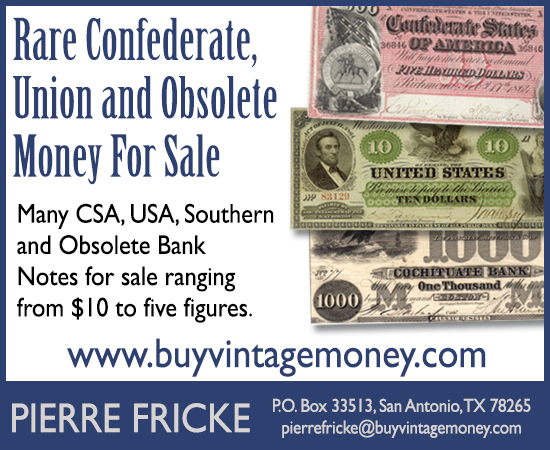
1575 SCOTTISH JAMES VI GOLD 20 POUNDS OFFERED
Heritage Auctions sent this press release for their upcoming sale of a rare Scottish piece. -Editor
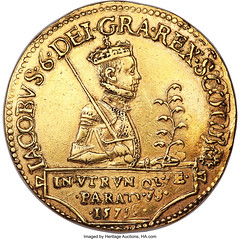
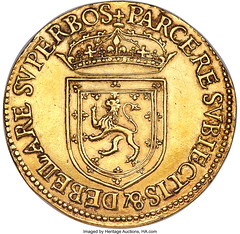
Longest-Reigning Scottish Monarch's Impressive Gold Coin Will "Wow" Bidders
Heritage will be offering a rare Scottish coin in the January 2020 NYINC Auction that appears to have never crossed the auction block at Heritage in the past. A search of Heritage archives reveals no examples of the scarce 1575 or 1576 Scottish James VI 20 Pound gold coin in our previous sales. This denomination was only produced for two years and is an impressive, large gold coin made over 440 years ago by the longest-reigning Scottish monarch! It is also the largest hammered gold denomination that was ever struck for use in the British Isles.
Despite the age of these coins and the fact that most were melted or worn down since then, a small quantity have survived. Estimates say that perhaps less than 15 examples exist today across both dates of this fascinating type, the largest Scottish denomination. Heritage will be offering a surprisingly high quality XF40 NGC example with only light wear: https://coins.ha.com/itm/scotland/world-coins-great-britain/james-vi-gold-20-pounds-1575-xf40-ngc-/p/3089-19017.s
The ruler who issued these coins, James VI, was King of Scotland starting in 1567 and then later the King of England and Ireland as James I after the union of the Scottish and English crowns on 24 March 1603 until his death in 1625. He was the son of the infamous Mary, Queen of Scots. He came to the throne at only 13 months old, with regents assisting until he came of age.
While an estimate has not yet posted for this lot, a less-nice example listed by a dealer sold for around $110,000 USD! This should be an exciting opportunity for collectors of early Scottish or British coinage when it comes up for bid.
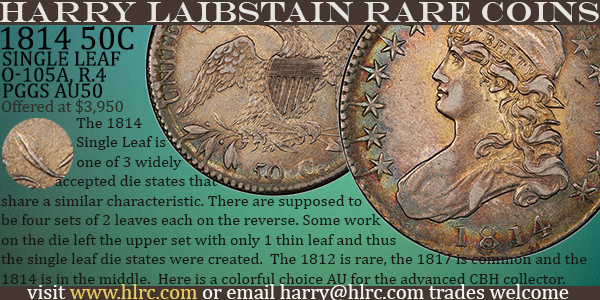
THE J.T. JONES COUNTERSTAMPS
Bill Groom submitted this preview of an article he'll soon publish in Talkin' Tokens, the journal of the National Token Collectors Association (NTCA). Thanks! He's found some interesting new information on the J.T. Jones counterstamps. -Editor
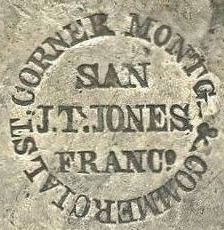 Last year, this writer was fortunate to have acquired a trio of historic counterstamps that were issued by J.T. Jones of San Francisco. They came via the NTCA auction which was liquidating the estate of veteran California token collector, Ron Lerch. The popularity of
this issue is largely due to the history surrounding the Blue Wing saloon of which Jones was the proprietor from about 1851-53. For those wanting to learn about the fascinating back story, this website offers a fine read:
http://thebellecora.com/thestoryofbellecora
Last year, this writer was fortunate to have acquired a trio of historic counterstamps that were issued by J.T. Jones of San Francisco. They came via the NTCA auction which was liquidating the estate of veteran California token collector, Ron Lerch. The popularity of
this issue is largely due to the history surrounding the Blue Wing saloon of which Jones was the proprietor from about 1851-53. For those wanting to learn about the fascinating back story, this website offers a fine read:
http://thebellecora.com/thestoryofbellecora
This “bullseye” counterstamp reads: J.T. JONES / SAN FRANCo / CORNER MONTG_ & COMMERCIAL ST. (“Montg” being short for Montgomery Street). All known specimens of this issue, but for one gold piece, are hosted upon silver coins. J.T.'s name was James Thompson Jones.
While researching this counterstamp, previously unpublished tidbits of information were found that will make for fine fodder in a future article. Presently, I would focus on the question of why these counterstamps were issued.
The Jones counterstamp clearly indicates that it was the site of the Blue Wing saloon on the corner of Montgomery and Commercial Streets. City directory and newspaper ads evidence that Jones was working there between 1852-53; and, possibly as early as 1851.
The stamp then begs the question as to why it lacks mention of the Blue Wing? Jones clearly chose to promote himself; this, as opposed to the saloon business. He only stamped silver and gold coins. In addition to being a saloon, the Blue Wing was a notorious gambling house.
An article about this counterstamp was published in The Numismatist in July of 1919. Writer, Farran Zerbe, concluded therein, “That no business is stated indicates that the countermark was not for advertising purposes.” Jones appears to have largely taken care to stamp his mark atop the obverse busts on coins. Most stamps are fairly well-centered. Thus, he wanted to assure that his stamps were prominent.
This writer initially suspected that these Jones counterstamps were somehow connected to the likely more profitable gambling aspect of his business. My thought was that they might have served as a guarantee of genuine silver or gold specie? Another, more likely possibility came to light when the below newspaper ad was found ....

Sacramento Daily Alta California, November 10, 1852
Jones was obviously in partnership with Prentiss when this raffle was held at the Blue Wing. Jones was apparently the senior partner. Might his “bullseye” counterstamped coins have been given out as prizes? The silver coins may have been consolation prizes, whereas a unique 1851 $50 gold slug could have been among the better prizes. What better reason to stamp a gold piece than to personally mark it as a prize? Thereafter, each winner would have a story to tell.
Had the raffle advertisement mentioned gold and silver coin prizes, this suspected use of the counterstamped coins would be far more likely. Jones was clearly a promoter who possessed an entrepreneurial flair, and the design style of his counterstamps mirrors his personality. Ultimately, James Thompson Jones left as indelible a mark on the history of early San Francisco as he did on his coins.
For more information on the National Token Collectors Association, see:
https://tokencollectors.org/
THE BOOK BAZARRE
HERITAGE U.S. ERROR COIN OFFERINGS
Here are some interesting U.S. error coins in an upcoming Heritage Auction sale, compiled from press releases. -Editor
Fascinating Die Cap Error Stars in Simpson Collection
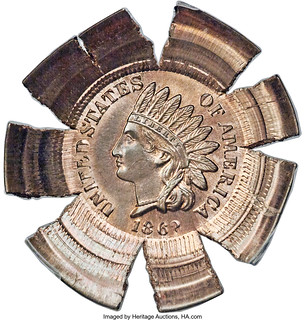
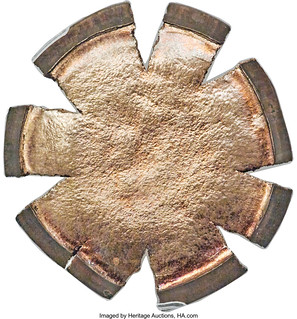
Most of the Bob Simpson Collection of US Coins is made up of the very best of American numismatics--the way coins look when things go right and a coin has been saved in amazing condition. However, one piece in the Simpson single-owner collection (Sale 1310) is special because of what went WRONG.
https://coins.ha.com/itm/errors/1862-1c-indian-cent-obverse-die-cap-ms67-pcgs/p/1310-11338.s?
A die cap is an error that can occur when a coin remains stuck on a day after it is struck instead of being released right away. While stuck to the die, this coin will create a fading impression on any other coin blanks (planchets) that continue to feed through below it. Over time, this coin will change shape and expand or flatten out if this process continues for long enough. It may also crack and fan out as seen in the example above.
Sometimes, die caps can be extremely dramatic. One of the best-looking ones I can recall seeing is the Simpson piece, an 1862 Copper Nickel Indian Cent. Our catalogers agree, saying "This is one of the most stunning and spectacular errors that we have seen or handled, a remarkable illustration of what can go wrong during coining operations."
This coin is amazing because of its huge starburst appearance (more the size of a half dollar than a penny!) as well as its fabulous condition--the coin is graded 67 out of 70 by PCGS despite its less-than-successful start at the US Mint. This coin would appeal to both error collectors and Indian Cent enthusiasts.
Wow - a remarkable error piece. -Editor
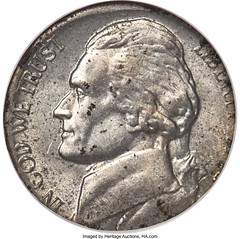
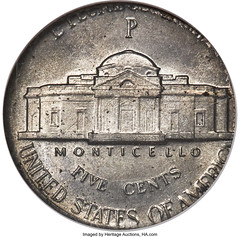
1943 was a strange year for the US Mint in several ways. First of all, Cents were struck in a silvery-colored Steel composition rather than the normal coppery-looking Bronze because of a shortage of industrial metals during World War II. Next, another change was made to the composition of Nickels because nickel was needed for the war effort as well. So-called "War Nickels" were created on 40% silver planchets to free up more nickel to be used for the Allied forces. Meanwhile, mintages of circulating coins were generally very high, with large numbers of small coins being produced in the 1940s overall. For example, nearly 1.1 billion Steel Cents were struck between the Philadelphia, Denver, and San Francisco Mints.
With these changes happening all at once, some mistakes were bound to happen. The 1943 Bronze Cent is the most famous Mint mistake, resulting in very rare and expensive pennies that were accidentally struck on the wrong planchet. A less-famous but still fascinating and highly collectible error coin can be found in the September 2020 Signature Auction: A 1943 War Nickel that was accidentally struck on a Steel Cent planchet.
Because the penny planchet was the wrong size and not as thick, the entire nickel design does not 100% fit. This Frankenstein of a coin went unnoticed at the time and likely slipped into a bin of coins at the US Mint, only to be found by a lucky collector and pulled out of change a short time later! It managed to survive in very nice condition, graded MS63 Full Steps by NGC today.
This is a great piece for either the error coin collector or those who seek out World War II era coinage (a popular time period for collectors). Even though the date of the coin is not fully visible, our catalogers were able to place it as a 1943 due to the use of a Steel Cent planchet (only used in 1943) and the giant "P" mintmark (only used for the War Nickels of the 1942 to 1945 period). This is a great example of how a mix-up years ago is a prize for numismatists today!
A 1970s Mistake Becomes a 2020 Prize
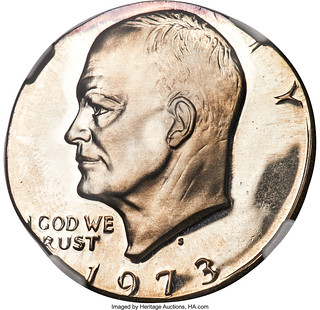
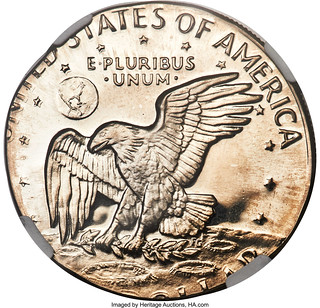
A major "oops" moment at the US Mint in the 1970s will result in a serious prize for collectors today. This 1973-S Proof Eisenhower Dollar, offered as part of Heritage's September US Coins Auction #1319, has a striking appearance that instantly tells you this that is a special piece and not like any other dollar coin of the period: https://coins.ha.com/itm/errors/coming-soon-/p/1319-89004.s?ic4=GalleryView-Thumbnail-071515
Proof coins are supposed to be struck to the highest standards of perfection when created by the US Mint. They are intended for Proof Sets, special collector's sets that never go into circulation. However, this proof coin really went astray when it was made and somehow escaped quality control to be available for error coin collectors today.
First, this is supposed to be a dollar but was struck on a Half Dollar planchet (a much smaller coin blank meant for the Kennedy Half Dollars made that year). Next, the coin has an off-center appearance because the smaller planchet was not big enough to evenly accommodate the whole design. Dollar-sized error coins are popular because you can really see the mistakes and appreciate them. Also, error coins are generally more valuable when you can read the entire date, so this coin is made more desirable by being able to clearly see that it is a 1973-S Proof.
We sold another 1973-S error recently that sold for around $19,000 ( https://coins.ha.com/itm/errors/1973-s-1-clad-eisenhower-dollar-double-struck-on-a-half-dollar-planchet-pr66-cameo-ngc/a/1318-3959.s), so this coin should draw lots of attention when it comes up for bid!

SMITHSONIAN CARNEGIE BOOK THEFT ARTICLE
Smithsonian Magazine published what may be the definitive article on the massive theft of rare books from the Carnegie Library of Pittsburgh. Here's a short excerpt, but bibliophiles and readers in general should read the full article online. It's a sad, sad tale. -Editor
Like nuclear power plants and sensitive computer networks, the safest rare book collections are protected by what is known as “defense in depth”—a series of small, overlapping measures designed to thwart a thief who might be able to overcome a single deterrent. The Oliver Room, home to the Carnegie Library of Pittsburgh's rare books and archives, was something close to the platonic ideal of this concept. Greg Priore, manager of the room starting in 1992, designed it that way.
In the spring of 2017, then, the library's administration was surprised to find out that many of the room's holdings were gone. It wasn't just that a few items were missing. It was the most extensive theft from an American library in at least a century, the value of the stolen objects estimated to be $8 million.
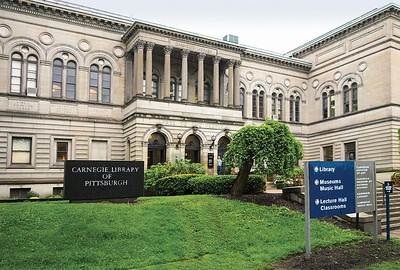
Many of the library's holdings had been donated over the years by the founder, Andrew Carnegie, and his friends. But in one notable instance, the library allotted money specifically to purchase 40 volumes of photogravure prints of Native Americans created by Edward Curtis in the first decades of the 20th century. The images were beautiful, historically valuable and extremely rare. Only 272 sets were created; in 2012, Christie's sold one set for $2.8 million. The Carnegie Library's set held some 1,500 photogravure “plates”—illustrations made apart from a book and inserted into it. They had all been cut and removed from their bindings, “except a few scattered throughout of unremarkable subjects,” a book expert later noted.
And this was just the beginning. The person who worked over the Oliver Room stole nearly everything of significant monetary value, sparing no country or century or subject. He took the oldest book in the collection, a collection of sermons printed in 1473, and also the most recognizable book, a first edition of Isaac Newton's 98. He stole a first edition of The Wealth of Nations by Adam Smith, a letter written by William Jennings Bryan and a rare copy of Elizabeth Cady Stanton's 1898 memoir, Eighty Years and More: Reminiscences 1815-1897. He stole a first edition of a book written by the nation's second president, John Adams, as well as a book signed by the third, Thomas Jefferson. He stole the first English edition of Giovanni Boccaccio's Decameron, printed in London in 1620, and the first edition of George Eliot's Silas Marner, printed in the same city 241 years later. From John James Audubon's 1851-54 Quadrupeds of North America, he stole 108 of the 155 hand-colored lithographs.
In short, he took nearly everything he could get his hands on. And he did it with impunity for close to 25 years.
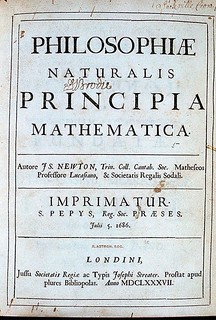 In the fall of 2016, library officials decided it was time to audit the collection again, and hired the Pall Mall Art Advisors to do the appraisal. Kerry-Lee Jeffrey and Christiana Scavuzzo began their audit on April 3, 2017, a Monday, using the 1991 inventory as a guide. Within an hour, there was trouble. Jeffrey was looking for Thomas McKenney and James Hall's History of the Indian Tribes of North America. This landmark work included 120 hand-colored lithographs, the result of a project that began in 1821 with McKenney's attempt to document in full color the dress and spiritual practices of Native Americans who had visited Washington, D.C. to arrange treaties with the government. The three-volume set of folios, produced between 1836 and 1844, is large and gorgeous and would be a highlight in any collection. But the Carnegie Library's version had been hidden on a top shelf at the end of a row. When Jeffrey discovered why, her stomach dropped. “Once a plump book filled with plates,” she would recall, “the sides had caved in on themselves.” All those stunning illustrations had been cut from the binding.
In the fall of 2016, library officials decided it was time to audit the collection again, and hired the Pall Mall Art Advisors to do the appraisal. Kerry-Lee Jeffrey and Christiana Scavuzzo began their audit on April 3, 2017, a Monday, using the 1991 inventory as a guide. Within an hour, there was trouble. Jeffrey was looking for Thomas McKenney and James Hall's History of the Indian Tribes of North America. This landmark work included 120 hand-colored lithographs, the result of a project that began in 1821 with McKenney's attempt to document in full color the dress and spiritual practices of Native Americans who had visited Washington, D.C. to arrange treaties with the government. The three-volume set of folios, produced between 1836 and 1844, is large and gorgeous and would be a highlight in any collection. But the Carnegie Library's version had been hidden on a top shelf at the end of a row. When Jeffrey discovered why, her stomach dropped. “Once a plump book filled with plates,” she would recall, “the sides had caved in on themselves.” All those stunning illustrations had been cut from the binding.
The appraisers discovered that many of the invaluable books with illustrations or maps had been ransacked. John Ogilby's America—one of the greatest illustrated English works about the New World, printed in London in 1671—had contained 51 plates and maps. They were gone. A copy of Ptolemy's groundbreaking La Geographia, printed in 1548, had survived intact for over 400 years, but now all of its maps were missing. Of an 18-volume set of Giovanni Piranesi's extremely rare etchings, printed between 1748 and 1807, the assessors noted dryly, “The only part of this asset located during on-site inspection was its bindings. The contents have evidently been removed from the bindings and the appraiser is taking the extraordinary assumption that they have been removed from the premises.” The replacement value for the Piranesis alone was $600,000.
To read the complete article, see:
THE INSIDE STORY OF THE $8 MILLION HEIST FROM THE CARNEGIE LIBRARY
(https://www.smithsonianmag.com/arts-culture/theft-carnegie-library-books-maps-artworks-180975506/)
To read earlier E-Sylum articles, see:
CARNEGIE LIBRARY OF PITTSBURGH RARE BOOK THEFTS
(https://www.coinbooks.org/v21/esylum_v21n12a07.html)
CARNEGIE LIBRARY RARE BOOK THEFT SENTENCES
(https://www.coinbooks.org/v23/esylum_v23n26a30.html)
LOOSE CHANGE: AUGUST 30, 2020
Here are some additional items in the media this week that may be of interest. -Editor
Crazy Tenino Wooden Money Idea Working
In a radio interview, Tenino, WA mayor Wayne Fournier said the town's latest wooden money initiative is succeeding. -Editor
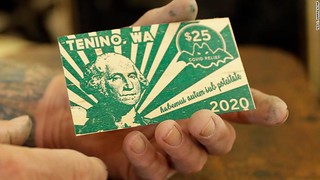 In June, word began to circulate about the small Thurston County town of Tenino, Washington printing its own wooden money to help out businesses struggling amid the ongoing COVID-19 crisis. Over two months later, it's become clear that the unconventional idea has been a hit.
In June, word began to circulate about the small Thurston County town of Tenino, Washington printing its own wooden money to help out businesses struggling amid the ongoing COVID-19 crisis. Over two months later, it's become clear that the unconventional idea has been a hit.
“It's a crazy concept, but it seems to be working,” Tenino Mayor Wayne Fournier told KIRO Radio.
Fournier says that while the original goal was to provide financial relief, the benefits have gone far beyond that.
“It's helped keep spirits up — there's kind of an unexpected psychological side to it; you can't put a number on that,” he described.
The city remains ready to reimburse businesses that turn in the currency, but so far, that's only happened on one occasion. Meanwhile, the money has started to appear for sale online for hundreds of dollars apiece.
To read the complete article, see:
‘Crazy' idea for wooden money in Washington town ‘seems to be working,' says mayor
(https://mynorthwest.com/2123527/wooden-money-tenino-washington-seems-to-be-working/)
To read earlier E-Sylum articles, see:
TENINO'S 2020 WOODEN MONEY
(https://www.coinbooks.org/v23/esylum_v23n24a35.html)
CBS TENINO WOODEN MONEY SEGMENT
(https://www.coinbooks.org/v23/esylum_v23n29a30.html)
Nation's Largest Black-Controlled Bank
Last week we discussed the history of The Freedman's Bank, the savings bank for formerly enslaved people created by the U.S. government following the Civil War. That bank didn't survive, but the New York Times reported this week on the merger of two private banks, creating the nation's largest Black-controlled federally insured commercial lender. -Editor
A merger announced Wednesday will create the nation's largest Black-controlled bank and the first with assets of more than $1 billion.
Broadway Federal Bank, a Los Angeles-based commercial lender founded in 1946, will combine with City First Bank in Washington, which opened in 1998.
Brian E. Argrett, chief executive of City First, will be chief executive of the combined company, which will use City First as its banking brand but keep the publicly traded Broadway Financial Corporation as its bank holding company. Wayne-Kent A. Bradshaw, Broadway's chief executive, will be the chairman of the combined company.
SACThe enlarged bank will specialize in three areas of financing: multifamily affordable housing, small businesses and nonprofit development, Mr. Argrett said in an interview.
To read the complete article, see:
Two Black-Led Banks Merge to Form a $1 Billion Lender
(https://www.nytimes.com/2020/08/26/business/black-banks-m.html)
To read the earlier E-Sylum article, see:
THE HISTORY OF THE FREEDMAN'S BANK
(https://www.coinbooks.org/v23/esylum_v23n34a15.html)

